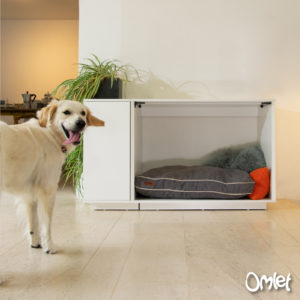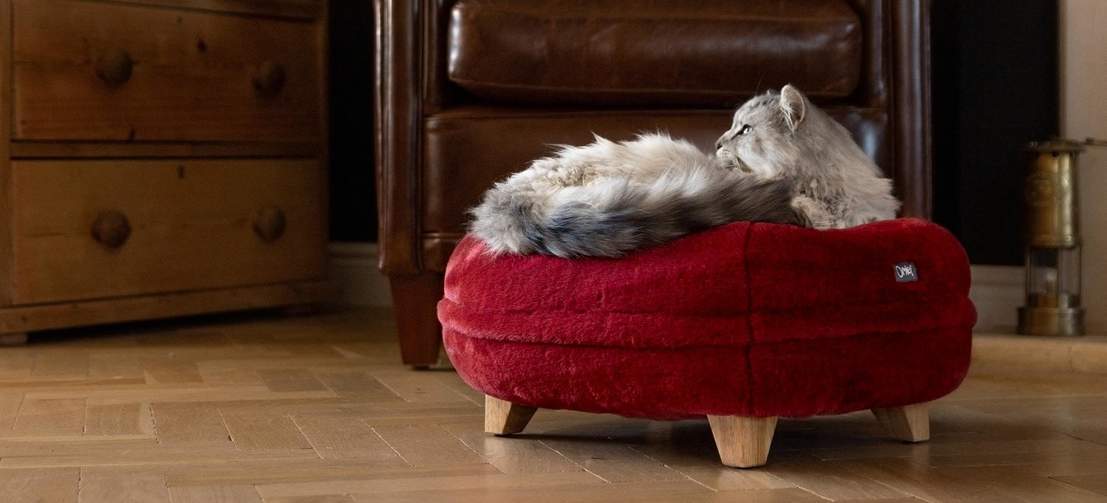
Cats meow for various reason and the barrage of short meows that greet you when you arrive home, are perhaps the most satisfying for a cat owner.
Cats also meow to get your attention – usually because they want some human contact, but also when they are feeling unwell. The meowing of a cat who wants feeding is another familiar variation on the theme! Cats may also meow if something in their environment is stressing them. It is also common for older cats with Cognitive Dysfunction Syndrome to start meowing in confusion, often at night.
Which cat breeds meow the most?
Some cats are more vocal than others, and although this is partly to do with the individual cat’s personality, the type of breed plays a role too. The cat breeds famous for their vocal behavior include the Birman, Maine Coon, Oriental Shorthair and Siamese.
Siamese cats are perhaps the loudest when it comes to meows. The Maine Coon has a variation on the standard cat meow, making a lovely chirping sound when they feel playful – which is most of the time!
Are there cats that don’t meow?
At the other end of the scale, some of the quietest cat breeds are said to be the Chartreux, Cornish Rex, Persian, Ragdoll and Russian Blue. There will always be cats that defy the meowing stereotypes, though, which is why you may well see the Bengal cat in online lists of the quietest cat breeds and the loudest cat breeds!
Why do cats stop meowing?
There are various reasons why a previously loud cat has gone quiet. These are some of the commonest reasons for a cat to lose its meow.
1. Change in surroundings. If you move home, introduce new furniture or bring strangers home, your cat may go quiet. In these situations they are weighing up the situation, deciding whether or not it’s safe to have ‘business as usual’. This is not actually a bad thing, as a cat who is genuinely anxious or afraid is more likely to meow and cry loudly rather than fall silent.
2. Temporary loss of voice. Cats that have been making a lot of noise – after spending all night fighting off intruders in the backyard, for example – may have a hoarse voice or lose their voices altogether. This is the equivalent of you losing your voice the morning after a party where you had to shout all evening to make yourself heard. The cat’s meow will soon return.
3. Upper respiratory infection. This is uncommon, but if it strikes it is likely to stop your cat meowing. Feline herpes, colds, and calicivirus are common causes, leading to laryngitis. These ailments will come with other symptoms, including runny or gummy eyes, wheezing, panting and breathlessness, coughing and sneezing, lethargy, loss of appetite, or discharge from nose. Any cat displaying these symptoms needs to be taken to the vet.
4. Allergies. These can produce symptoms in a cat similar to respiratory infections, including wheezing and sneezing. These will often stop the cat from meowing. It is important to find the cause of the allergy, and if it isn’t obvious, a vet can advise you on the best course of action.
5. Laryngeal Paralysis. This is a dysfunction of the cat’s larynx (voice box). It is linked to old age, which is why very old cats tend to be quiet. Degeneration of the vocal cords means that the cat is no longer able to produce a sound. There is no discomfort involved, however, and a silent cat will still be a happy cat.
6. Tumors. Cats can be prone to various tumors, growths, polyps and cancers. If these affect the cat’s vocal chords, throat, or mouth it will lose its meow or change the sound drastically.
7. Nerve damage. If a cat has managed to get items such as grass blades or twigs stuck in its throat, it may damage the nerves that control the voice box. A blow to the throat region can produce the same effect, and this sometimes occurs if a cat has fallen or been attacked by another animal.
8. Recent surgery. A cat that has undergone surgery involving anesthesia will have undergone intubation – i.e., had a tube inserted into its air passages. This can lead to internal inflammation that makes the cat unable to produce sound for anything from a few days to two weeks.
Less common reasons for a cat losing its meow include hyperthyroidism and rabies.
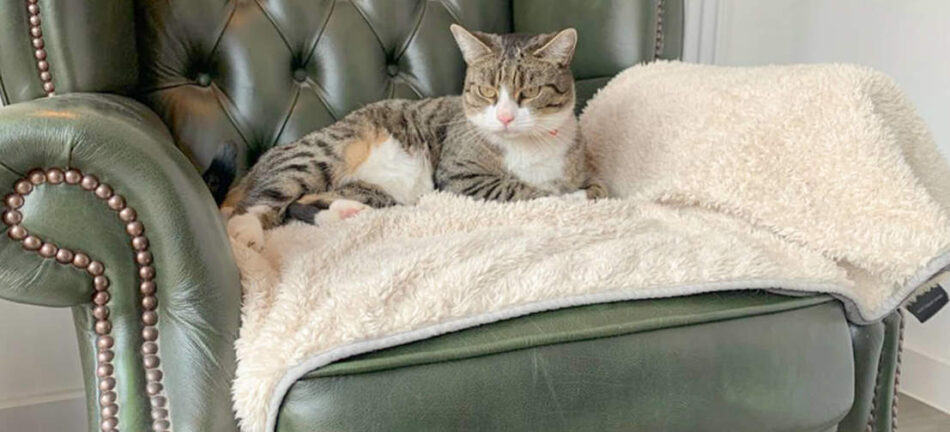
In all situations, your cat will need a little time to recover. Medical or age-related conditions can silence the meow, but in most cases the cat will be back to its normal meow in a few days. Give your cat lots of attention and reassurance, and it will soon be back to its old habits!
This entry was posted in Cats
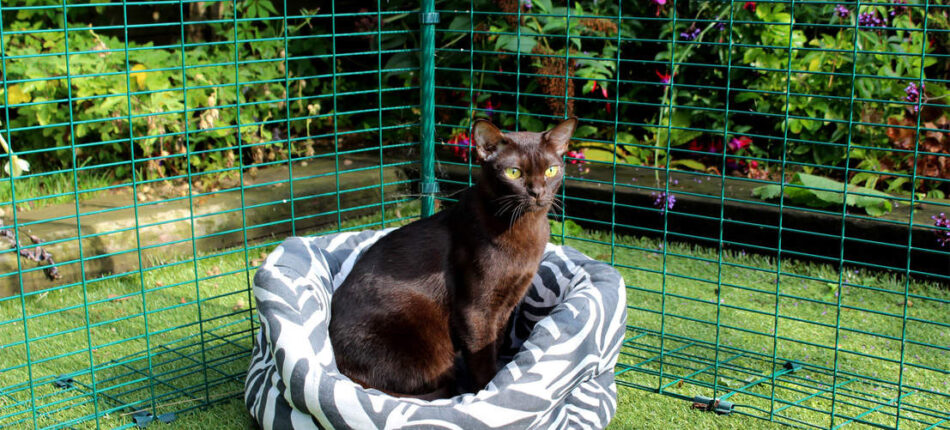
In Britain, the fact that black cats are considered unlucky is a complete reversal of the original belief that black cats brought good luck. It is white cats that were originally considered unlucky. So, what caused this drastic change of fortune that now leaves us with the question of why are black cats unlucky?
There is an explanation behind this is transatlantic exchange. In America, which in its early days was obsessed with witches and witchcraft, black cats i.e. the classic pet of the witch, were demonized. This superstition was then imported along with all the other traditions of Halloween. What Halloween goody bag is complete without something related to pumpkins, bats and black cats of course?
Are black cats a sign of bad luck?
The American blacklisting of black cats is linked to the days when British settlers were founding colonies in New England. These founding fathers were Christian fundamentalists, hounding out anything they perceived as witchcraft. Witches and their pet cats were viewed with fear and hatred, and a black cat was thought to be particularly demonic. They are featured regularly in witch trials of the period.
This classic US symbol of bad luck began to overturn the black-cat-good-white-cat-bad superstitions of pre-20th century Britain after the appearance of the 1934 movie The Black Cat. The film was based on a short story by American horror writer Edgar Allen Poe, which was first published in 1843. The commercialisation of Halloween in the last few decades has set in stone these superstitions of the black cat as a scary beast.
Are black cats lucky or unlucky?
The reason why black cats hadn’t been demonized in Britain was that witches and their cats had always been there, originally as part of everyday life. And there was nothing sinister about keeping a cat – they were the only means of controlling the mouse and rat population. The so-called witches were the herbalists and healers of the villages, the Middle Ages version of the GP.
Black cats used to be thought lucky on board ships, not only keeping the rodent population under control, but helping to keep storms away too. Fishermen’s wives sometimes kept black cats at home to ensure their husbands were safe at sea. However, if the cat ran away, or if a random black cat hopped on board and then off again, it meant the ship was in danger of sinking.
In Scotland, the arrival of a black cat in a house was said to be a sign of good fortune. In general, a black cat taking up temporary residence on a porch was said to be a good omen. This is an echo of superstitious ages gone by, when felines (and not just black cats) symbolized domestic happiness. In Ancient Egypt, for example, the cat-shaped goddess Bastet was a symbol of domestic bliss and good fortune.
Gladstone – the black cat of Whitehall
The tradition of black cats as bringers of good luck still survives at the heart of the British government. Whitehall has adopted several cats from Battersea Dogs & Cats Home over the years, for the traditional role of mouse hunter. Many of them have been black cats, including the current holder of the post, Gladstone, who began his official government work in 2016.
Gladstone the black cat is a social media star, not surprisingly. His popular Instagram page makes him one of the most famous black cats around today.
What is the superstition about a black cat crossing your path?
In some parts of the world, including Britain a few centuries ago, the direction of travel of a black cat crossing the road was important. If the cat crosses your path left to right, it means good luck. If it goes the other way, it means bad luck. Similarly, if the cat walks towards you, it brings good luck, but if it runs away from you, it takes the good luck with it. For this reason, chasing a black cat from your property is said to bring misfortune.
The ultimate symbol of a black cat running away is when it dies. In the 1640s, King Charles I was reported to have said that he owed his good fortune to his pet black cat, and that he dreaded the day its nine lives were used up. Shortly after the cat’s death, Charles – having been on the losing side in the English Civil War – was arrested and eventually beheaded.
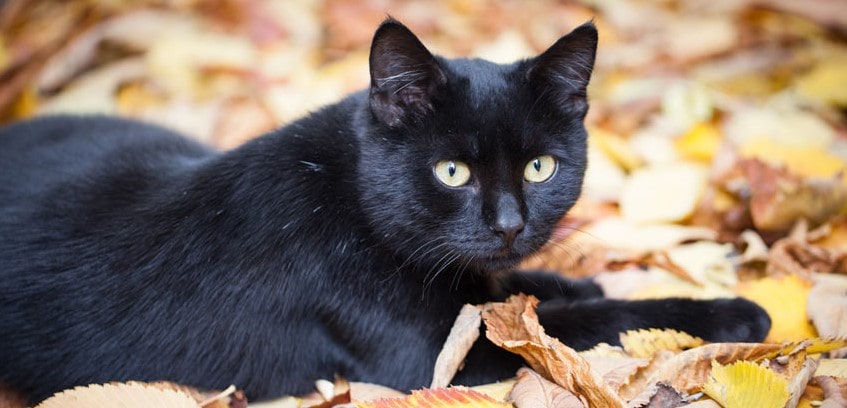
Where do black cats originate from?
In folklore, the witches’ black cat has very deep roots indeed. In Greek mythology, Hecate, the goddess of witchcraft, had a black cat that had originally been Galinthias, a servant of Hera (wife of the god Zeus). She had turned him into a black cat as punishment for trying to prevent the birth of Hercules. Shakespeare’s witchcraft-colored play Macbeth features Hecate (although her black cat is not mentioned).
Putting all superstition about cats aside, a black cat is simply a cat with the maximum amount of melanin, which turns the fur black. Pure black cats are rare in cross-breed cats, and it is thought that only 22 of the recognized cat breeds can have completely black varieties. If you’d like to find out more about different types of cats, take a read of the Omlet Cat Guide.
The superstitions about black cats may all sound like simple good fun, but there are definitely downsides. Stray cats and kittens with black fur are harder to relocate, and there are stories of black cats being abused by some trouble makers during Halloween. So, even though we may dismiss the superstition about unlucky black cats as harmless fun, it can still cause very real problems.
The truth of the matter is that black cats, along with all other cats, are wonderful and bring nothing but good luck. The estimated 200 million cat owners worldwide will certainly vouch for that!
Do you believe black cats are unlucky? Superstitious or not, one thing that can’t be denied is how much joy cats bring to the lives of their owners! Treat your purry pal to Omlet’s wide range of Cat Products including the innovative Freestyle Cat Tree to give your feline friend the fun they deserve!
This entry was posted in Cats
It’s no secret that cats are opinionated, and there are 10 things humans do that cats hate. These feelings aren’t wielded as a personal vendetta against their owners — they’re just natural behaviors domesticated felines have inherited from their wild ancestors. So before you chalk up your cat’s attitude to quirky personality traits, see if some of your behaviors might be creating friction in your relationship with your feline.
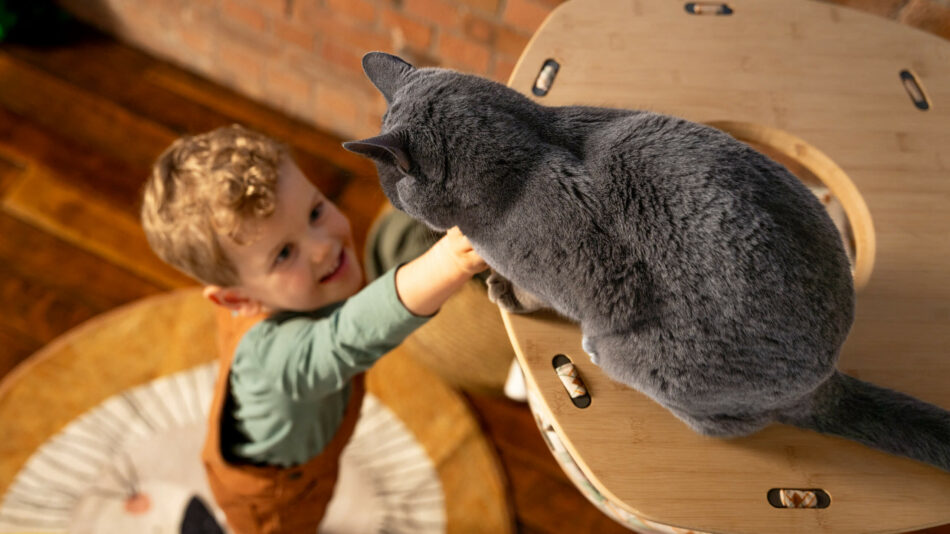
Why are you the way you are? — Sincerely, Every Cat Owner
If you share your home with a feline, at some point you will inevitably ask why your cat does certain things. All cats are quirky — it’s part of why we love them. But a large reason for their unique behaviors is due to their close connection with their ancestry. You’ll notice cats still closely resemble cougars, lions, ocelots, bobcats, and other wild felines, while most dog breeds don’t share very many similarities in their appearance with wolves or coyotes. This is also why cats tend to be more aloof than dogs, and are more independent than canines.
Does this mean cats make bad pets? On the contrary — these attributes make cats loyal, loving companions once they’ve bonded with their owners. Connections between cats and humans run deep, spanning thousands of years. But to establish a lasting bond with your cat, you’ll need to understand their basic nature and avoid certain actions or behaviors that are off-putting to them. And while there are exceptions to every rule, here are 10 common ways humans interact with their cats that are actually offensive to felines.
Making loud noises around your cat
Cats have much better hearing than humans. This is a trait passed down from their wild cousins, and it serves them well in most circumstances. But their keen hearing also means that sudden or sustained loud noises can startle or grate on your cat’s nerves. Washing machines, loud conversations, blaring music, fireworks, parties, and yelling are all sounds that can stress your cat. Most cats will find a quiet place to wait out the commotion, so if you notice your cat hiding more than usual, take stock of the noise level in your home.
Aggressive petting
While dogs are known to enjoy an enthusiastic back scratch or belly rub, most cats prefer a more gentle approach. Heavy-handed patting, rapid scratching, or handling a cat’s tail, paws, or stomach will make some cats feel threatened. This can trigger cats to run, lash out with a well-aimed swat, or nip. Most cats also dislike being cuddled or hugged, which can also trigger similar stress reactions. Stick with gentle strokes to your cat’s fur, always going with the direction of their hair. Most cats will also welcome a gentle scratch under their chin or along the sides of their face.
Ignoring your cat
Not all cats crave attention — but when they do, it’s on their terms and in a manner of their choosing. Ignoring your cat when they’re demanding your attention can be a personal affront to them. If you notice your cat jumping into your lap, hovering around your hands, meowing at you, or laying across your work surfaces, they’re expecting attention. Many cat owners are no stranger to the phenomenon of having a demanding cat as a semi-permanent feature on their desk, keyboard, or lap, and it’s best to soak in the quality time while it’s their idea.
Bathing your cat
You may see tigers at the zoo play in water elements, but as a general rule, cats do not like water. In fact, they go to great lengths to avoid getting wet. A cat’s tongue is well-designed for keeping their coats clean, and the vast majority of cats won’t require an actual bath in their lifetime. So, resist the temptation to lather up your feline unless they’ve gotten into something too dangerous or sticky for them to clean off themselves.
Taking your cat for a car ride
Most cats do not enjoy riding in the car. While your family dog may happily bound into the car, their tongue lolling out the side of their mouth through an open window — your cat has very different opinions of moving vehicles. Cats are prone to motion sickness, and the combination of movement, noise, and smells will stress them. Limit car rides with your cat to necessary trips like vet visits or moving to a new home.
Adding new pets to the family
Some cats enjoy the company of others, but generally speaking, cats will be just fine as the sole pet in a home. Cats are territorial, and are perfectly content having a house to themselves. Bringing a new pet home, whether it’s another cat, a dog, or even a small pet, can create stress for your feline. Always introduce new pets slowly, and watch your cat’s reaction closely. Some cats can cohabitate with others, while others will always prefer to be the sole apple of their owner’s eye.
Rearranging your home
Moving furniture around your home may be feng shui, but rather than having a calming effect on your cat, it can be quite the opposite. Cats are very in tune with their surroundings and even small changes can cause them to stress. This is especially true if you move their belongings to a different part of the house, or if you’re moving to a new home. Give your cat plenty of time to adjust to changes, no matter how small they may be.
Leaving the litter box dirty
Cats are very concerned with being clean. They are meticulous with their coats, prefer pristine surroundings, and despise a dirty litter box. Your cat will avoid using a litter box that’s too full or smelly, which is one of the main reasons for cats seeking alternative options in your home. The desire to cover their eliminations again stems from nature — they want to hide their presence from other animals. Clean your cat’s litter box daily, and don’t use scented litter or deodorizers, as these can be offputting or too strong for your cat’s keen sense of smell.
Physical discipline
Negative reinforcement in the form of physical discipline doesn’t communicate to cats. Swatting your cat for unwanted behaviors is a sure way to break their trust and damage your relationship with them. By nature, cats are dominant, independent animals, which makes them reactive to physical discipline. If you see your cat doing something less than desirable, break their attention by clapping your hands, whistling, or speaking sternly to them. Redirect them to a desired behavior, and reward them with a pet or a treat.
Not giving your cat enough space
A cat bed in a secluded corner or a cat tree with multiple levels of escape is what all cats crave. While most cats will happily cohabitate with their humans, they need their own space to retreat to throughout the day. Cats are solitary animals by nature, so they need a quiet refuge from human routines and activities. If you see your cat napping in their space, observe and appreciate them from a distance — they’ll come to you when they’re ready.
Omlet and your cat
Cats are intriguing and mysterious pets that grace the homes of millions worldwide. Their popularity is second only to dogs, speaking to their allure and delightful companionship. Our cat products speak to their nature, and encourage natural behaviors to help your cats live healthier, happier lives. From cat trees and scratchers to cat litter boxes and cat beds, we have everything your feline needs to feel their best.
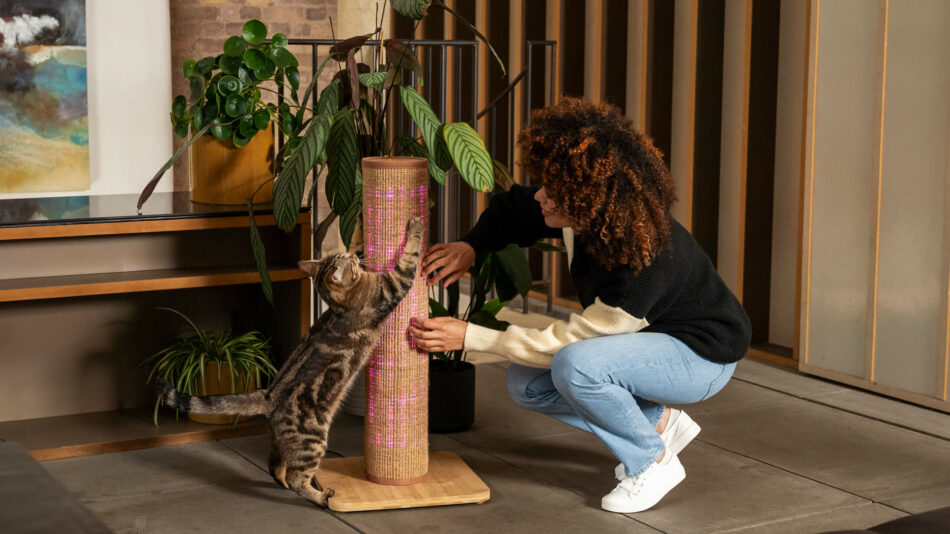

This entry was posted in Cats
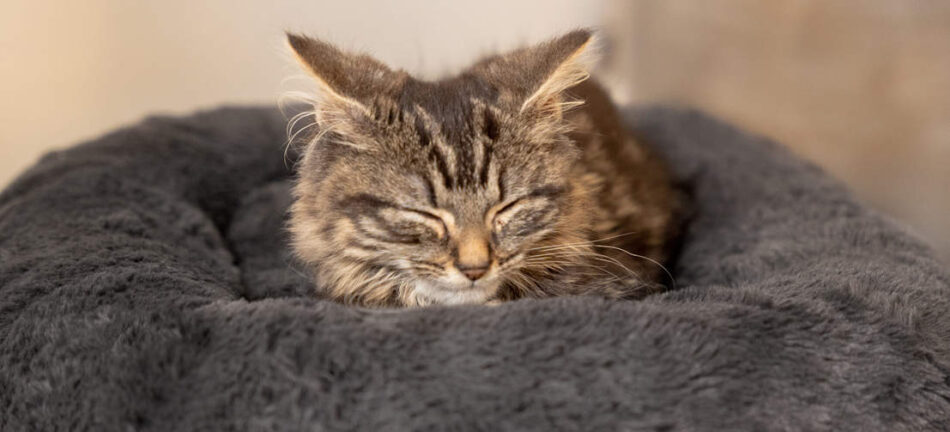
You’ve had a hectic week at work and now the car’s broken down. Sound stressful? It’s only human to let things get the better of us sometimes, and in times of trouble, we often turn to our four-legged companions to calm us down. Cats always manage to find a way to help us relax and give us something else to focus on for a moment. But do you ever think about what might potentially make them stressed? Stress is not an uncommon problem with cats. They can be anxious animals that don’t deal well with change, so there are lots of factors that might make your pet stressed. It’s not always easy to spot signs of stress, or to combat them, but it’s important to try, as chronic stress can lead to health and behavioral problems in felines.
4 common causes of stress in cats
An illness or physical trauma that requires treatment or medication will very likely make your cat feel worried. Apart from the potential pain or discomfort, the cat might also have to take pills or wear a cone, which limits their agility and freedom. Being in heat, or your cat being pregnant, will unsurprisingly make most female cats feel on edge, and it is very difficult to tell them what’s happening to their bodies. Apart from more medical conditions, grooming-related changes like having a bath or getting a haircut can sometimes cause stress in your cat.
The big ones here are moving to a new house, or spending time away from the home, like in a kennel or on holiday. Cats prefer the safety of what they know, and will most likely not enjoy traveling anywhere.
Extreme weather and seasonal changes can make cats worried and stressed, as can a lack of stimulation in their current living space. Outdoor cats who for some reason have been limited to the house will for example often develop stress-related symptoms. Another common environmental stress factor for cats is the presence of other pets, including another cat. If you’re considering adding a new feline addition to the family, first, find out how your cats can live in harmony.
Anyone unfamiliar to your cat coming into the household can be seen as a threat. Whether they’re guests who are just over for dinner or new housemates moving into the spare bedroom, this can make your pet anxious. A new baby in the house can be stressful for everyone involved – two and four-legged family members alike. This isn’t to say that cats and children cannot get along great, but what’s important is that boundaries are respected. The Maya Indoor cat house from Omlet is the ideal spot for a kitty escape, which can be placed out of reach from any disturbances. The super soft Omlet Maya Donut cat bed slots in perfectly to the cat house, too, making their hideaway the ultimate spot for catching up on cat naps.
Litter tray and diet factors
Changing your cat’s brand or type of litter or food can also make your cat stressed. If you plan on switching your cat’s litter, this should be done over a gradual period of time, mixing the new litter, with the old. A new litter box can also be anxiety-inducing, as can an unusually dirty tray or lack of food and water.
What can stress do to a cat?
Bursts of stress, fear or anxiety are normal and harmless, but it’s prolonged, chronic stress that can be dangerous. Like in humans, longer periods of stress are associated with depression and a weakened immune system. In cats, stress is also believed to cause or trigger conditions like feline asthma. Stress can also cause many behavioral problems such as aggression and litter tray avoidance.
How can I tell if my cat is stressed?
First of all, it’s worth noting that a cat that seems worried by a barking dog outside the window or the sudden noise of something dropping on the floor is completely normal. It’s when your cat is on constant high alert, that you should consider stress management solutions. Here’s what to look out for:
Physical symptoms of stress include, but are not limited to:
- Vomiting and diarrhea
- Excessive shedding and/or grooming
- Changes in eating and sleeping patterns
- Lethargy
Behavioral symptoms of stress include, but are not limited to:
- Significant changes in routines or behavior
- Urinating outside the litter tray and spraying on furniture
- Unexpected aggression towards humans or other pets
- Disinterest in things going on around them
- Excessive meowing
- Hiding for long periods of time
If you notice a change in your cat’s behavior or physical appearance, the first thing you should do is take them to the vet to rule out any possible medical condition that could be causing the symptoms. Stress can in itself be a symptom of some diseases and illnesses, but the vet will be able to give you the best advice for your cat specifically.
What can I do to help my cat?
The most important thing to do is to try and find the source of the stress. Observe your cat’s behavior in different situations to try and see if there are any triggers. Once you think you have located the reason/s your cat feels stressed, it’s time to solve the problem.
Offer a safe space
Firstly, make sure your cat has a safe space they can retreat to when they feel stressed or anxious. It should be a room free from disturbances, where you can place a cat den like the Maya Indoor cat house. It’s important that everyone in the family, children included, knows not to disrupt the cat when they’re in their safe space to make sure they’re able to fully relax.
Social interaction
Spending time with your cat is a good way of providing stimulation for your cat. It also means social interaction for both you and your feline friend, which is great for dealing with stress. It can be chasing after a catnip toy, watching them use their cat scratching post or just relaxing on the sofa – let your cat decide.
Look after yourself
Another thing to consider is that our pets are highly affected by our well-being. If you feel stressed, your cat is more likely to feel stressed, and if you’re relaxed they’re more likely to not see everything around them as a threat. It’s easier said than done to stop feeling a certain way, but perhaps the knowledge that your pet’s mental health could be affected, can inspire you to find new ways of managing your own stress.
Omlet and your cat’s well-being
At Omlet, we expertly design products to put your pets’ well-being first. From the Maya Indoor cat house to Stak cat scratcher, our designers know what both cats and owners need to live a harmonious and stress-free life.
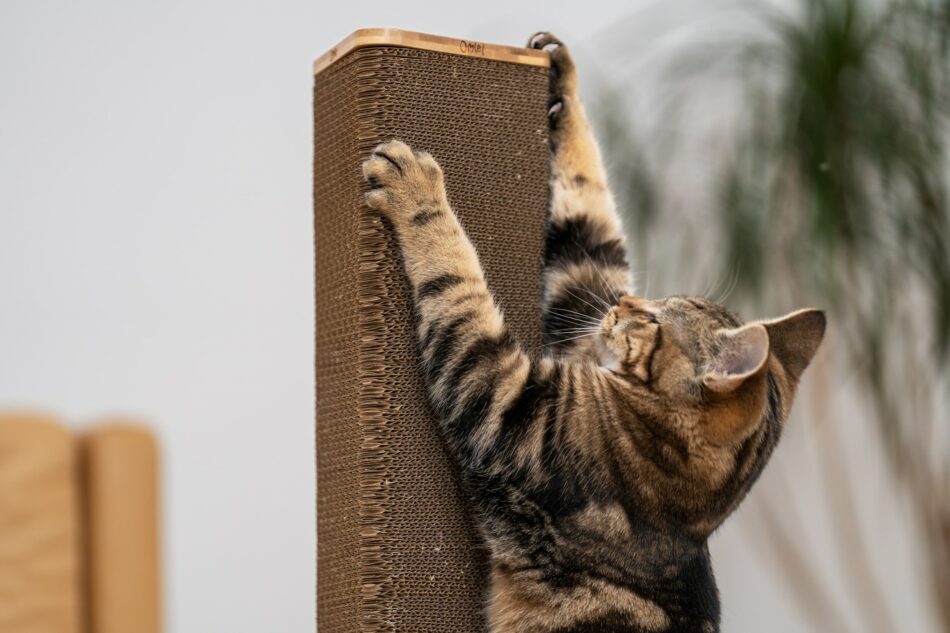
This entry was posted in Cats
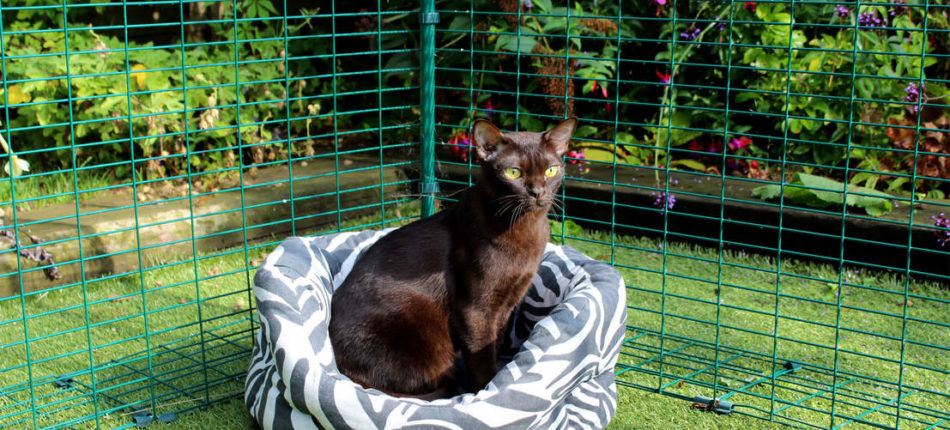
Cats that are let outside have a shorter life expectancy than indoor cats. Sure, some outdoor cats live until they are 20 years old, but on average, letting your cat roam free outside significantly increases the risk of injuries, accidents, and infections.
There are clear pros and cons for both indoor and outdoor cat, but certain factories can encourage the decision to keep your beloved pets indoors most of the time.
Traffic
Cats and cars do not mix, and if you live by a busy road you might not want to run the risk of letting your cat out to roam freely. Even the cleverest of cats cannot assess speed from a moving vehicle, and you will struggle to train them not to chase a mouse over the road without first checking the coast is clear.
Indoor breeds
Some cats are just not made to go outside. Their fur might not be thick enough to handle neither sun nor rain, they are not agile enough to move around different structures and textures, might not have the street smartness to stay out of trouble, or will just never see the point of outdoor activities, like exploring and hunting.
Cats with FIV
Feline Immunodeficiency Virus is a very contagious disease that significantly lowers your cat’s immune system. If your cat has been diagnosed with FIV, it is highly recommended that you keep him or her indoors to stop them from passing the virus on, but also to protect them from infections or injuries that their immune system cannot handle.
Wildlife protection
Letting your cats roam free allows them to express natural behaviors, and one of these is the strong urge to hunt. While no one really cares about the odd mouse cats kill, people can get very upset when they see your cat bringing home song birds, baby hares, or rare lizards. Wildlife fans are often great opponents of cat predation, and even if you trust your neighbors not to hurt your pet, letting your cat out might create an uncomfortable animosity between you and the rest of the neighborhood.
 Cat thefts
Cat thefts
Cat thefts are more common than you might think, maybe not surprisingly seeing how much some popular cat breeds cost. Thieves might keep an eye on your cats comings and goings over a few days, and lure them away when no one will notice.
It is important to be aware that this does happen, and if you have an expensive cat you might not want to let it run free outside without supervision.
Illness and injuries
If your cat is sick or has hurt themselves in some sort of accident, the vet might have told you to at least temporarily keep them indoors. While this can be extremely frustrating for both cat and owner, it’s important not to hurry the healing process by letting your cat out too early.
If any of these apply to you and your cat, or if you for some other reason have decided not to let your pets roam free, you’ll be glad to know that there is a great solution that will both give your pet access to fresh air (which is highly beneficial to both their physical and mental health) and keep them safe: a cat enclosure.
The Omlet Outdoor Cat Run, or Balcony Cat Run, can be customized to fit the space you have in your backyard or on your balcony. It is just over 6ft high, so you can easily go inside to spend time with your cat in the run if you want, or you can leave them to play or rest in the sunshine while you work in your backyard.
The run can be placed on most surfaces, and you can decorate it with climbing toys and scratching posts to keep your cat active and entertained. It is stable and secure, so you will not have to worry about leaving your cat unsupervised for shorter periods of time.
Not having to walk your cat on a leash will mean he or she can be outside for longer, and by adding covers to your run you can make sure they will not get rained on, or burn their skin in the sun.
In a cat run, your pet won’t get into contact with traffic or any other, potentially unfriendly cats. You will be able to limit and control how much he or she moves around to not over activate bones and muscles, and the risk of theft is greatly reduced. Not only will your cat be safer, small rodents and song birds can also live a slightly more relaxed life!
This entry was posted in Cats

What is FIV?
FIV, or Feline Immunodeficiency Virus, is a viral infection that affects cats all over the world. It’s not in itself particularly dangerous, but steadily weakens the cat’s immune system, making them more susceptible to secondary infections.
FIV can be found in 2.5-5% of all cats worldwide, but is less common in healthy, domesticated cats like our pets.
How can my cat catch it?
FIV is spread through direct contact with an infected cat, most commonly through bites and wounds, which is why unneutered male cats prone to fighting for territory are over-represented among cases. Some evidence shows that mums can pass the infection onto their kittens, but it is rare. Infection through social grooming, sharing food and water bowls, and general close contact is very rare.
FIV can’t be transmitted between species, so infected cats can live with humans and other pets, but should be kept in a single cat household to be on the safe side.
How does it affect my cat and how do I spot it?
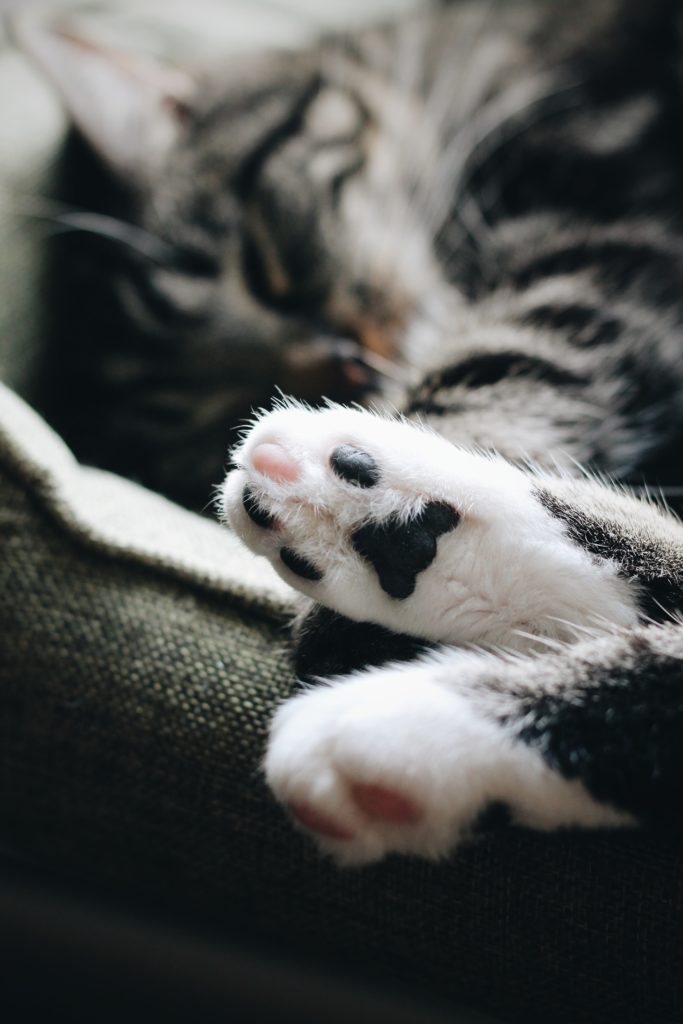
FIV starts with a short, normally relatively manageable illness that is not always noticed by the owner. After this the cats’ immune system will start to slowly deteriorate, but it can be years before it actually affects your cat in any way.
Something that will make a vet react and test for the infection is a cat that seems to struggle to recover from minor infections and illnesses. The cat doesn’t necessarily need to be very ill, it’s more a question of how often he or she needs to see the vet, or if they seem to be constantly battling some kind of health issue.
FIV positive cats are more susceptible to certain types of tumours, serious respiratory infections, skin diseases and mouth inflammations. That being said, research shows that infected cats have a similar life expectancy to healthy cats, and will in most cases be able to live a long and happy life if kept inside and looked after by a caring owner.
Can FIV be cured?
The simple answer is no, there is no cure for FIV, but as it’s secondary diseases and infections that mainly affect the cat, there are in most cases treatments, and there is no reason that a FIV positive cat won’t make a great pet for years to come.
A vaccine against FIV has been developed, but its efficiency has been questioned, and it’s currently only being used in some places in America.
What can I do if my cat is infected?
As FIV is spread through direct contact with other cats, it’s very important that infected cats are kept indoors. Not only does this stop the cat from passing on the disease to other felines, but also reduces the risks of catching secondary infections that due to their weakened immune system can make them very ill.
If you have a cat with confirmed FIV that can’t be let outside, they will still greatly benefit from some fresh air. The Omlet Outdoor Cat Run makes it possible for your cat to be outside and interact with the world around them, without the risk of running into any other cats. Decorate the run with some toys and a climbing post and let your cat play while you potter around the garden, or put a chair inside and take the opportunity to spend some quality time with your pet in the sunshine.
Other things you can do to help your cat is to take him or her for regular check ups, and to contact your vet as soon as you notice any changes, even if minor, in your cat’s health or behaviour. Also make sure to give a nutritious and well-balanced diet. Raw food diets are not recommended for FIV positive cats as uncooked meat and eggs can be dangerous to cats with a compromised immune system.
This entry was posted in Cats
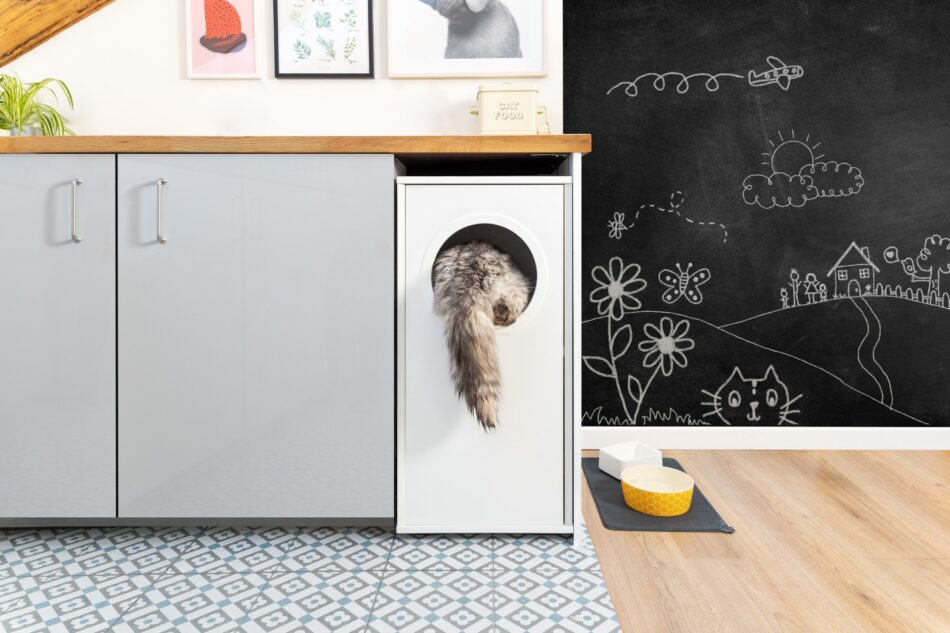
Most cats don’t need much persuading to use a litter tray. This makes training a straightforward process, and the key detail is the tray itself.
A litter tray needs to be large enough to accommodate your cat comfortably while it’s using the facilities. It also needs to be placed in a suitable spot. Cats feel vulnerable when they’re relieving themselves, and will not use a litter tray in a busy part of the house. A quiet corner is what they need – but it should be away from the feeding area, as cats, like humans, do not like their eating and toileting activities to be in the same space!
The cat litter itself is not usually an issue. All the available brands do the job. The advantage that shop-bought products have over plain sandy soil is that they are super-absorbent, and don’t stick to the cat’s feet. It is best to avoid perfumed or deodorizing litter, unless the additives are all natural. Chemical perfumes can cause allergic reactions in some cats.
Basic Litter Training
A young kitten with a weak bladder – or a stressed rescue cat – may take time to get the hang of litter trays, but it is rare for a cat to fail this basic training course!
- Make sure the tray is big enough. If in doubt, get the biggest one you can. This will accommodate the growing cat, and the tray will not seem ‘full’ after a couple of visits. If the cat thinks the litter is too soiled, it will not want to enter the tray.
- If your cat is particularly shy, a covered tray is the best option, as these give more sense of privacy.
- If you have more than one cat, it is recommended that you should have one tray per cat. This prevents problems if the pets fall out or decide they’re not going to poop where another cat has just pooped!
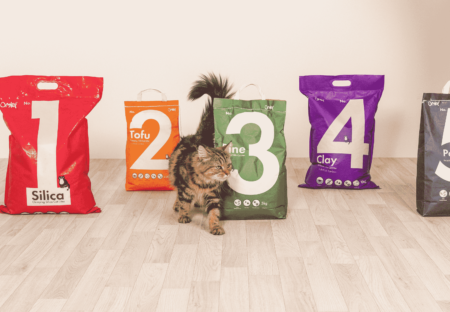
- Remove the solid waste from the tray each day, and thoroughly wash it – and replace the litter completely – at least once a week. If the tray starts to smell too unpleasant, the cat will be tempted to relieve itself elsewhere else.
- In the early days, timing is important. A kitten will usually need to relieve itself after playing and after eating. When a young kitten has finished eating, carry it to the litter tray. A few sniffs and a bit of litter-pawing will often stimulate the desired response. You can also play with your kitten next to the litter box, ready to lift her onto the tray when play has ended.
- Lead by example. Not by actually using the tray yourself, of course, but by pawing the litter with your finger. Don’t take the cat’s paw and force it to dig, though, as this can be stressful and may even lead to litter phobia, which is definitely not what you want.
- If accidents happen outside the litter tray, put the droppings in the tray as a prompt for the cat.
- Be patient, never shout at the cat if it’s taking a little time to get the hang of it, lavish praise and affection on a successful litter-visit, and once your pet knows what to do, just quietly leave her to it.
Litter Training Problems
If the cat is resistant to the idea of using the tray and continues to use other parts of the house as the toilet, one effective deterrent is to move the cat food bowl to the place where the accident happened. Cats do not like mixing and matching their food and toilet, so this should help her move on to the more appropriate facilities.
If the message is still not getting through, confining the cat to a spare room may do the trick. With the litter tray at one end and the food and water bowl at the other, it would be a very perverse cat indeed who did not get the message. It may sound a little like a prison, but as long as the room isn’t too hot or cold, the cat will feel secure. You can visit for playtimes too, of course, and the need for confinement will usually be over in a couple of days.
Cats that persistently refuse to use a litter tray may be stressed by something in their environment. This could be other cats, a dog, noisy children, or the simple fact that the tray is not in a suitable location. There are occasionally health-related issues that make a cat ‘miss’ the tray, too, so that’s worth checking out if you’re not making progress with the training.
Otherwise, litter training a cat is simplicity itself.
This entry was posted in Cats
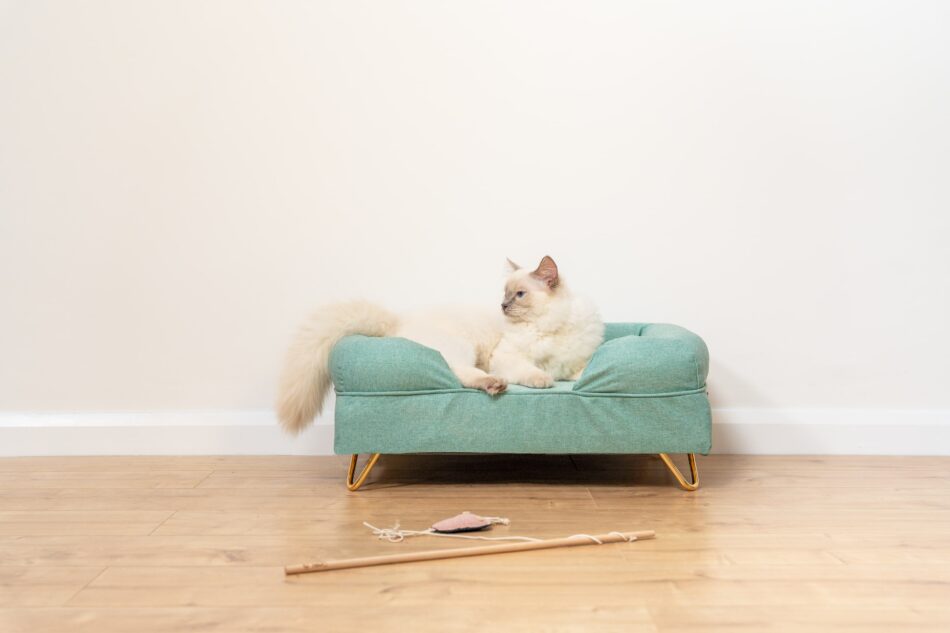
Allergy to cats is the most commonly seen of all pet allergies, almost twice as common as the dog equivalent. It’s estimated that up to 3 out of 10 people have some level of reaction to felines, but to what extent it limits peoples’ ability to spend time with cats varies greatly.
Common symptoms of cat allergy include one or several of the following symptoms after having been around a cat, or having spent time in a house where cats live:
- Coughing and wheezing
- Itchy and blotchy rash on the chest and face
- Red and itchy eyes
- Sneezing
More extreme allergic reactions are shortness of breath, severe swelling, and in bad cases anaphylactic shock. If the allergy is present but not as prominent people might at first be absolutely fine around cats, but over time experience neverending fatigue and a constant sore throat.
What causes these symptoms?
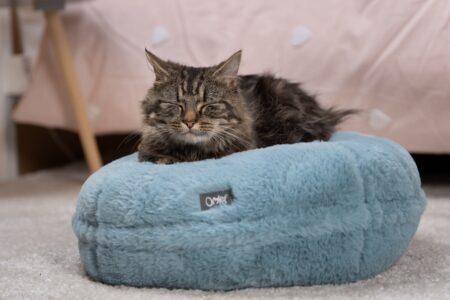
Opposite to many people’s belief, it’s not actually hair that causes pet allergies, but a protein produced in oil glands on the skin, and is found in cat saliva, urine and dander (dried flakes of skin often found on cat hair). This protein is called Fel d. The World Health Organisation recognizes 8 different allergens, Fel d 1-8, and out of these, Fel d 1 accounts for 60-90% of allergic reactions. Its exact biological function is still unknown, but it sure knows how to annoy humans!
People with allergies have an oversensitive immune system that mistakes harmless things, like a cat protein, for dangerous invaders and sends out a strong attack to destroy these invaders. The symptoms allergic people feel are side effects of the body’s defence against the allergen.
What is there to do?
Male cats produce higher levels of Fel d 1 than females and neutered males. The difference is however relatively small, so if you’re struggling it probably won’t matter that much.
The same goes for so-called hypo-allergenic cat breeds. While they do work for some allergic cat lovers, they still produce Fel d 1. So if you have severe reactions to some cats, getting one that produces less dander won’t make it possible for you to live with one. The only thing you can do is to spend time with the breed you’re potentially planning to buy or adopt beforehand and see how you get on.
Antihistamines can be a help to some allergic people; if taken regularly they minimize symptoms and make it possible to spend time in a house where a cat has been. They are normally best taken preventatively, making sure the body is prepared should it come across any triggering allergens. It’s however not recommended to depend on antihistamines on a daily basis to make it possible for you to get a cat. Even if it’s sad, you might have to come to terms with your allergy and that cat ownership might not be possible at the moment.
Finally, it’s worth noting that you can develop cat allergies at any time of your life, even if you’ve never shown any signs before. Allergies are not hereditary as such, but the tendency to develop allergies is sometimes passed down from parents to their children. This means that if you’re allergic to cats, it is more likely that your child will develop an allergy to something. It won’t necessarily be to cats as well, but as it’s one of the more common allergies it’s worth letting your child spend time with other peoples’ cats before getting one yourself.
This entry was posted in Cats
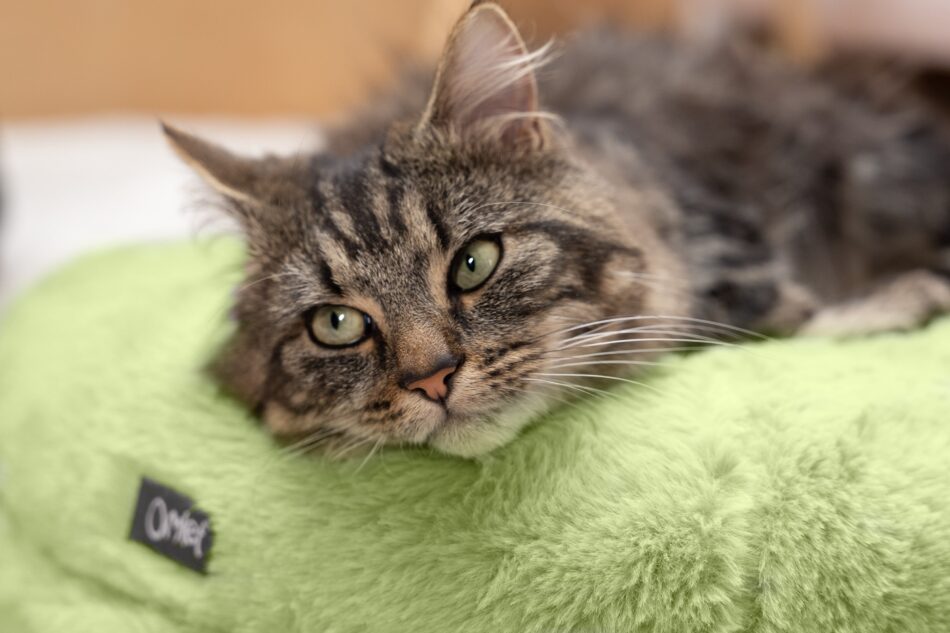
1.
If you have problems with your cat eating their food too quickly, try changing their food bowl to a larger, shallow plate. This will slow them down significantly as they have to take smaller mouthfuls, which minimizes the risk of the food coming back up again.
2.
If you’re worried your cat doesn’t drink enough water, try putting the water bowl in a different spot to where they get fed. In the wild, cats will not drink at the same place as they eat to avoid the meat contaminating the water, and this behaviour lives on with some pet cats.
3.
Does your cat rub against your laptop or try to sit on the keyboard as you’re trying to work from home? Bring out the best cat toy of all time, the cardboard box! Place a box on your desk and most cats will forget about you and happily play or curl up in the box.
4.
Try freezing some of the treats you give to your cat. The unusual texture and temperature of the treat will stimulate several of the cat’s senses and encourage explorative play. This is especially good in summer when the cat will love the cooling effect even more.
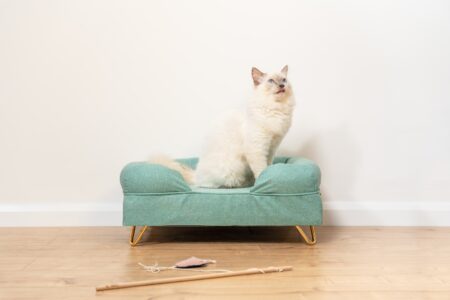
5.
If you want to keep your cat off the kitchen counter, a new sofa or an expensive side table, put some double-sided tape over the surface where the cat’s sharp claws would cause damage. Cats hate the feeling of the sticky tape and will quickly learn to avoid these spots. At that point you can remove the tape.
6.
The best way to avoid cat hair all over the house is to get on top of grooming and brush your cat regularly, preferably daily. It doesn’t only decrease unwanted shedding; it also helps the cat groom itself and prevents matted fur and hairballs. Get a brush that suits your cat’s type of hair and make it a lovely time of the day together with your cat.
7.
For fur that has gathered on carpets and upholstery, put on a rubber glove and run your hand over the surface to gather up pet hair. Shower squeegees can also be useful for this task!
8.
Potted plants sometimes become alternative litter boxes, which is neither nice nor very good for the plant. To stop your cat from going in the pot, cover the soil with a layer of pinecones. These blend in nicely but will put your feline friend off.
9.
One of the best ways of stimulating an indoor cat is to give them a place to climb. If you haven’t got enough space for a large climbing station, put up some shelves that the cat can explore.
10.
No matter how much you groom your cat and make sure the house is nice and clean, the cat’s bed will still be exposed to a lot of hair and dirt. Make sure you get a cat bed with a machine washable cover that can be cleaned over and over again without fading or weakening.
This entry was posted in Cats
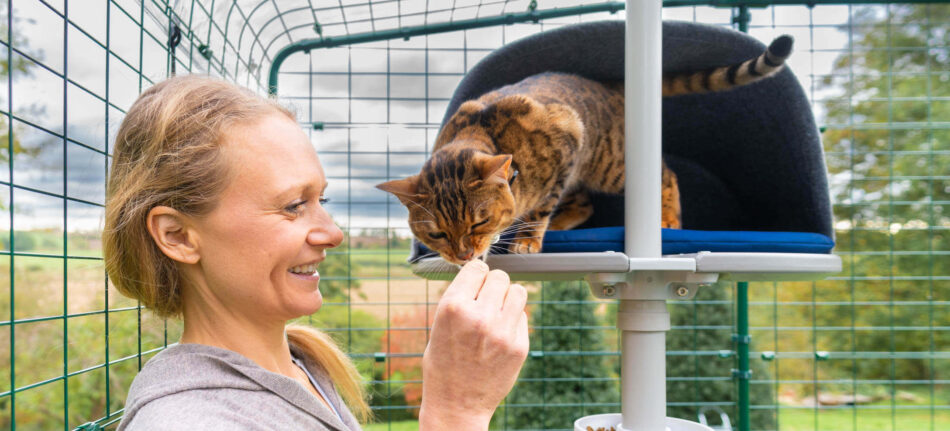
Have you ever felt that the missing piece to your life puzzle was a four-legged furry companion with whiskers and a tail? We get it. Owning a cat is one of life’s greatest pleasures.
But how do you know when is the best time to get a cat? Read on to find out all the answers to your questions to help you decide if you are ready to become a cat owner.
Questions to ask yourself before getting a cat
Do I have enough time?
One of the greatest attributes of cats is that they’re pretty independent. But while they don’t demand a lot of attention, they should also not be left alone for long periods of time. Why? Cats can be like kids in that way. Left to their own devices for too long and things might get, well, messy.
So if you’re thinking about getting a cat, make sure you have a schedule that allows you enough time to devote to your new furry feline. It’s ok if you have to leave every day to go to work, as long as you’re at home in the mornings and evenings for kitty playtime. If, however, your job requires you to travel away from home often, you might want to consider waiting until you have a more consistent schedule before bringing a cat into the mix.
Do any family members have allergies?
Most people know if they have allergies to certain foods or things in their environment. But unless you’ve ever been around a cat for an extended period of time, you may not know if you’re allergic to them. And since studies show that a third of the US population has some type of allergy to cats, it’s always good to know about the members of your family before adding one to the brood.
But how can you know if you’re allergic to cats before owning one? Simple. Go visit a local animal shelter and ask to spend some time with the cats. Or, if you have a friend who owns a cat, ask to spend some time at their house to see if you have any reaction. If you or any other member of your family does indeed have an allergy to cats, you’ll know very quickly after spending just a little time with them. Watch out for itchy eyes, sneezing or even skin irritations – if any of these start to happen, you might have a cat allergy.
So does that mean I can’t own a cat? Not at all! There are many cat breeds like Sphynx, Bengal and Siamese that are relatively ‘hypoallergenic’ for people with mild cat allergies. So your dreams of having a feline friend can still come true!
Can I keep up with the upkeep?
Cats are notoriously one of the most low maintenance pets to own. But that doesn’t mean owning a cat requires no effort on your part. If you’re thinking about getting a cat, you must first ask yourself if you’re ready to be a pet parent. Here’s what that involves:
- Regular cleaning of the cat litter box. It’s a dirty little job, but someone’s gotta do it!
- Hairball picker upper. Cats and hairballs go hand in hand and often in the most unsuspecting places.
- Beauty groomer. While cats are naturally pretty self-sufficient in cleaning themselves, regular brushing and nail trimming is still something they need help with.
- Lots of love – because really that’s the best part of owning a cat!
Do I live in a cat-friendly place?
Cats are creatures of habit and will find their own cat space within your home. That being said, it’s important to make sure that where you live is accommodating to cats. If you live in an apartment or condo where you rent, be sure to ask if having cats in your place is allowed.
You also want to ensure your interior space is conducive to cat living. Small spaces need not scare you away from owning a cat as there are many products to help you still entertain your cat and not feel too cramped. Have a balcony instead of a backyard? No problem. You can quickly turn your outside space into a kitty playground with a safe and secure cat enclosure.
Is your living room adorned with beautiful leather furniture? If so, you definitely want to invest in a cat tree and scratcher so your furry friend exercises their nails on something other than your sofa. No space is too big or too small for cats as long as you are prepared.
Do I have any major life events looming?
Before deciding to add a four-legged member to your two-legged family, you need to first assess your current life circumstances. While you can’t always predict the ebbs and flow of life, you want to make sure you are not about to embark on any big life changes when thinking about getting a cat.
Upcoming moves or new jobs that require heavy travel may prohibit your ability to give your new cat the attention and time they need. Cats need consistency at the beginning of their new life with you to feel comfortable and at ease. This is why you also want to avoid bringing home a new cat during big celebrations like birthdays, Christmas or Fourth of July. Best rule of thumb? Wait until all is calm on the domestic front before bringing home a new cat.
Best place to get a cat?
If your answers to all the questions above are still pointing you in the direction of cat ownership, congratulations! The next decision you need to make is where are you going to get a cat. There are a plethora of options when it comes to choosing the best cat for you: breeders, pet store, rescue/shelter and even family and friends.
We highly recommend rescuing a cat from a shelter or rescue organization for a variety of reasons:
- Typically the adoption cost is much less.
- Most cat adoptions from rescues or shelters include vaccinations, neuter/spay, and even a first free visit to a local veterinarian.
- Most cats at a rescue or shelter are of the “mixed-breed” variety and these cats tend to actually live longer, healthier lives than their pure breed counterparts.
- But most importantly, you’ll be saving a life.
Certainly, if you have identified a real cat allergy in yourself or other family members but still long for a feline friend, going through a breeder of a specific hypoallergenic breed would be best. Regardless of where you get your cat from, you are sure to receive far more love in return.
Everything you need for your new cat
Once you have identified it’s the right time for you to get a cat, the real fun begins. Having the essential cat products at home when your feline friend arrives will make their adjustment that much easier. Here is a list of everything you need for your new cat:
- Litter box: Cats need their private bathroom space, too. The Maya Cat Litter Box from Omlet gives your cat the discreet potty breaks they crave while also minimizing the mess of kitty litter on your floor. Plus it looks great in your home, too.
- Donut cat bed: You’ll quickly learn that cat napping is a real thing. And since you want your cat to be as comfortable and cozy as possible, you want to make sure they have a snuggly sleep spot to catch all their zzzs.
- Cat tree: Cats are curious. Their need to explore, jump, climb and scratch is imperative to their existence. So give them what they need and get them an indoor climbing wonderland that will enhance their curiosities.
- Outdoor cat enclosure: Can my new cat play outside? Absolutely. With the Catio designed by Omlet, senses are heightened and freedoms are found as your cat safely explores the outside world.
Knowing the best time to get a cat comes down to knowing if you are ready to commit to the time and resources needed. Taking the time to ask yourself these questions and prepare accordingly will make your relationship with your new cat all the more enjoyable. So, all that is left to answer is, are you ready to get a cat?
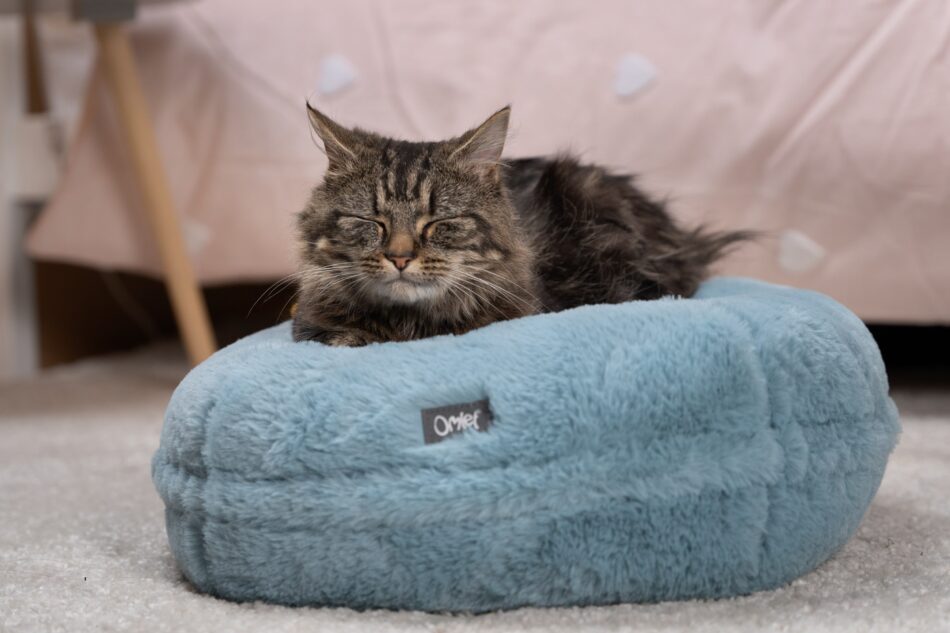
This entry was posted in Cats
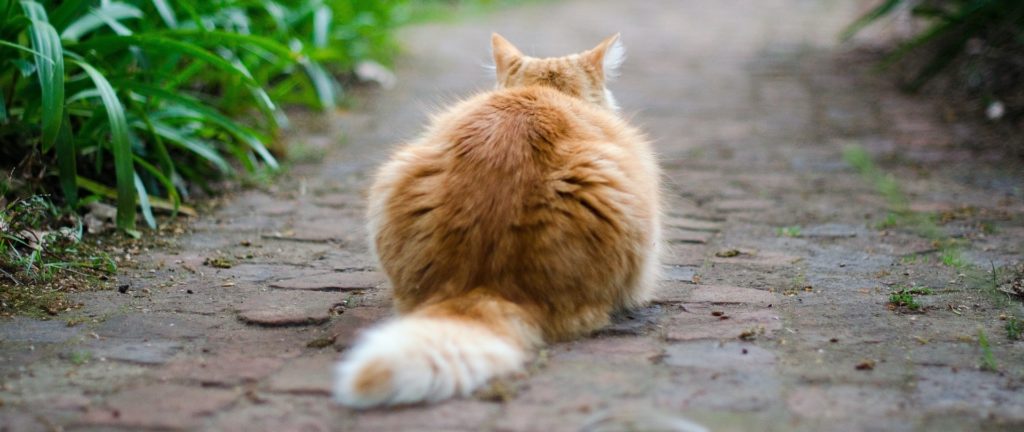
A cat’s signature move is the slinky walk with an upright tail. Intriguingly, no other cat species walks like this, and it is not known exactly when pet cats first adopted the posture.
The domestic cat’s ancestor, the African wildcat, hooked up with humans more than 10,000 years ago. They probably adopted us, rather than the other way round, attracted by the surplus of rodents nibbling away at our grain stores. It seems pretty certain that the feline freeloaders soon adapted their body language – tails included – just to please us, quickly securing their place on the sofa.
The following cat-of-nine-tails facts tell you everything you need to know about your pet cat’s swishing tail.
1 – Balancing Act
Cats have fantastic balance. Their tails play a major role in this skill, acting as a counterweight when puss is ‘tightrope walking’ on narrow walls or ledges. The tail also helps cats run and change direction with great agility – and without stumbling. Next time you get the chance, watch a cat run and turn – if a human took some of those feline twists and turns at a similar pace, they would simply fall over.
2 – Tails Tell Tales
Cats communicate with their tails, sending out subtle signals. The most familiar signal is the upright tail, a sign of a happy cat. In moments of great pleasure, the upright tail will quiver at the tip. This is not to be confused with the twitching tail of a resting cat, which means she’s irritated. Once the cat is on her feet and the tail is swinging from side to side, she’s switched from annoyance to anger, so watch out!
3 – Let us Prey
When they’re stalking prey, cats tend to keep their tails low and still, but they may still flick and twitch in excitement as the moment of pouncing draws near. If the hunt is unsuccessful, the tail will twitch restlessly in irritation.
4 – No Tail to Tell
Some breeds, including the Manx, are born without tails, due to a dominant gene. Two tailless Manx cats should never be allowed to breed, however, as a combination of the two dominant genes brings severe health problems to the kittens. The curly tail of the Bobtail breeds doesn’t come with the same potential health problems as the Manx cat gene. Both the Manx and the Bobtails seem to have learnt to balance pretty well without a classic cat tail.
5 – When the Tail Goes Cold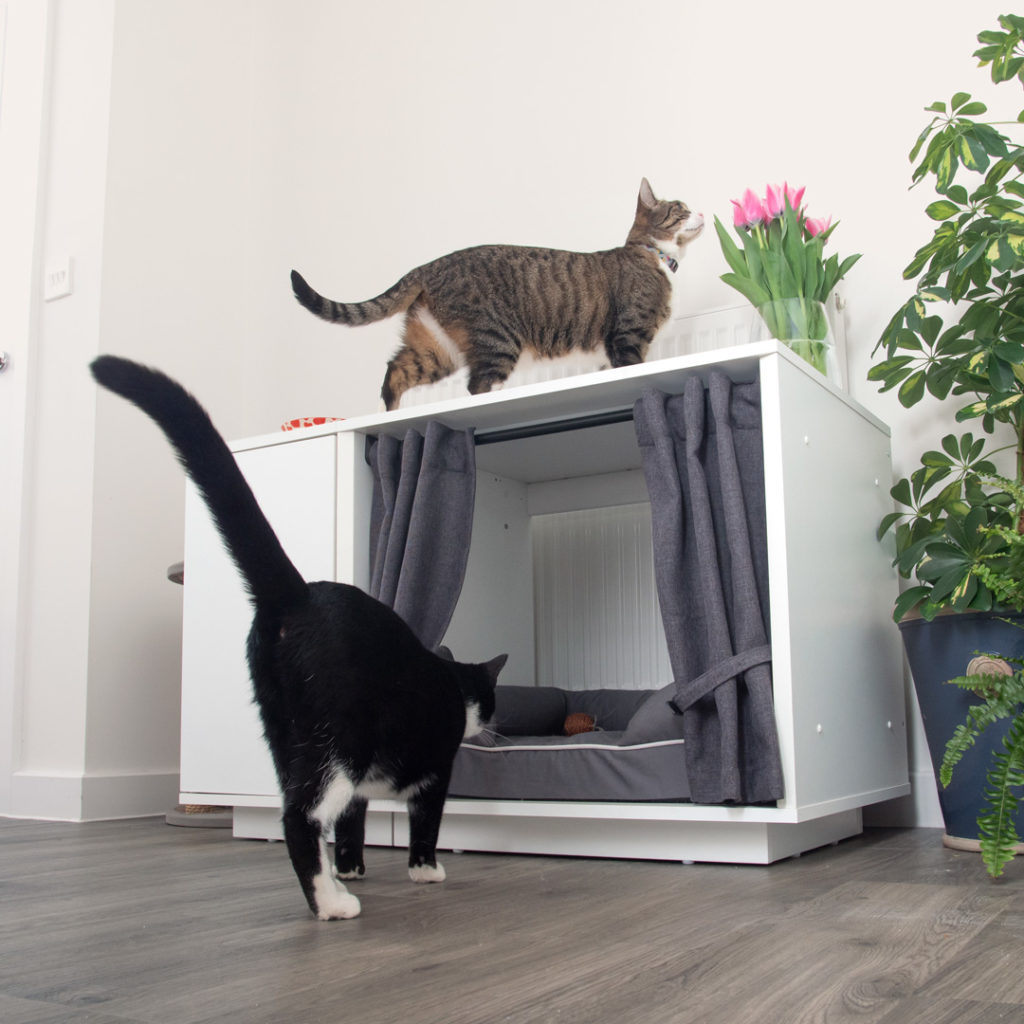
A cat that has lost its tail in an accident, or has injured it in a door or traffic accident, is definitely handicapped. It will not be able to balance as well as before or send out those tail-twitching signals. It is still capable of leading happy life, though – owners just have to look for other body language details to read their pet’s mood.
6 – Inside Story
Cat’s tails have between 19 and 23 vertebrae, depending on the breed (and not counting the tailless Manx!) This represents around 10% of the total number of bones in the cat’s body. These vertebrae give the tail its whiplash flexibility, held together with complex muscles, tendons and ligaments.
7 – Ailing Tails
If your cat is feeling unwell, you can usually see the signs in its tail. It won’t be held upright or twitching excitedly like before. If you notice that the behaviour of your pet’s tail has changed, take it as a sign that she needs a health check. Some cats are prone to dermatitis, sometimes brought on by fleas. This can often be seen in inflamed areas in the region where the tail joins the rump. Some hormonal problems can result in inflammation in the tail too.
8 – Upstanding Felines
The ability to walk with an upright tail is actually unique to domestic cats. All other members of the cat family walk with the tail down, horizontal, or tucked safely between the legs.
9 – Tail End
Cats raise their tails to tell us they’re happy and relaxed, but when prowling amongst other cats the raised tail signal is an invite to come and investigate. Other cats will sniff a cat whose tail is in the air.
It is widely thought that purring is something cats invented just for us – and perhaps that upright happy tail is another one of the ways they won a place in our hearts and homes.
This entry was posted in Cats

Watch a cat stalking through the grass or simply relaxing in the sunshine, and it’s clear that they love being outside. If you live in the countryside, this isn’t much of an issue, and all country cats mix and match the great outdoors and the great indoors. In towns, however, owners may be less keen to let their cat spend a night on the tiles.
Town cats have shorter lifespans than country cats, on average. This is not due to the benefits of fresh air – it’s simply because most premature deaths in the cat population are caused by road accidents, and a town the cat has far more chances of quickly shedding its nine lives.
Why do cats like being outdoors?
Do you like spending time in the sunshine, with the fresh air in your lungs and a gentle breeze on your face? Cats are exactly the same. Like you, they get a buzz from life beyond the four walls. They are stimulated by movement, sounds and scents, and even the humblest garden has these in abundance. Cats will investigate whatever the world has to offer, and this gives them both mental and physical stimulation, a combination that results in a happy and healthy cat.
Research has shown that certain sounds, including the squeaks of rodents and the twittering of birds, is particularly stimulating for cats. They find these things satisfying and engaging on an instinctive level, and all animals need to keep their instincts happy.
If given the chance, cats will make full use of the possibilities of life in the fresh air – not just the immediate vicinity, but the much wider local area, sometimes prowling a territory with a radius of one mile from their home. They will form all kinds of relationships in this territory, some friendly and some not, but all part of the rich tapestry of cat life.
What this means is that access to the outdoors is a great stress reliever, giving a cat many of the things it needs in order to stay alert and content, and to allow it to chill in its natural habitat.
However, owners who want to keep their pets indoors should not be put off by this. They can still provide their pet with most of the benefits of the outdoor life.
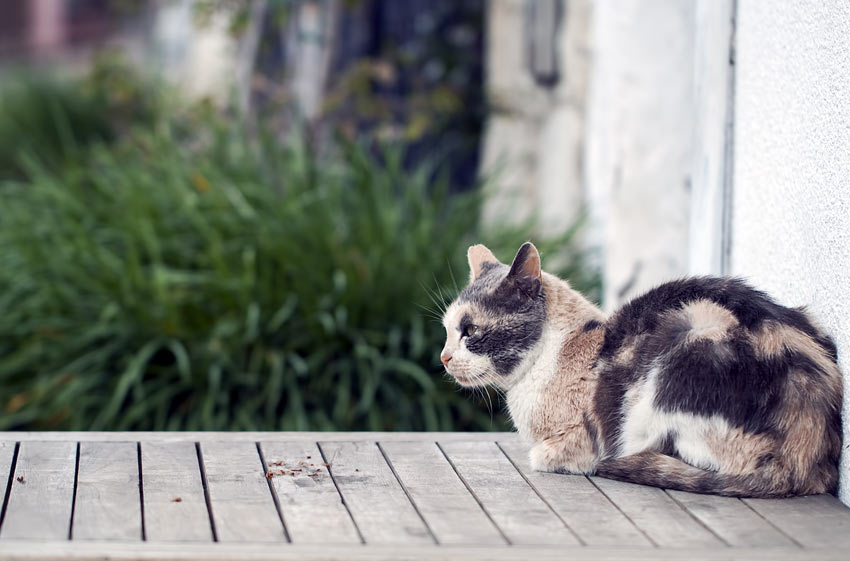 How to bring the outdoors indoors
How to bring the outdoors indoors
Breed – and therefore personality – plays a big part in a cat’s contentment. Some breeds – including the Burmese, the Siamese, the Korat, the Oriental and the Abyssinian – need the outdoors in the same way as a piano player needs a piano, and they will not be happy if denied access to nature. Others – including the Persian, the Russian Blue and the Ragdoll – seem to have been bred for a life on the sofa, and will not miss being outdoors one little bit. Most crossbreed cats like to enjoy the best of both worlds, so if your cat is going to live indoors, you will need to make the domestic space a bit more ‘wild’.
Providing stimulation with toys, including ones filled with catnip, is half the battle. You should also open your windows wide enough to let the fresh air and the scents and sounds indoors, without giving an escape route for the cat. Failing that, opening the door to the garden while closing off the inner doors will allow the fresh air to circulate.
If space allows, a cat run is a great option. This can be linked to the house via a cat flap on the door, allowing your pet to spend as much time outdoors as it wants. If the cat run is not connected to the house, you can let the cat spend time on the run while you’re out in the garden as well. Or, if you start early, you may be able to train your cat to walk on a lead. This needs careful planning, though, as avoiding dogs out on their walks is an important detail!
Even if you live in a flat it’s possible to allow your cat some fresh air, providing you have a balcony. Omlet’s Cat Balcony Enclosure fits most balconies, and will give your cat a safe space to feel the wind in their fur.
The main takeaways from this are that cats need fresh air, and all the things it represents. But at the same time, town cats who are happy with a life on the sofa can enjoy most of the fun and stimulation of the outdoors by staying indoors.
This entry was posted in Cats
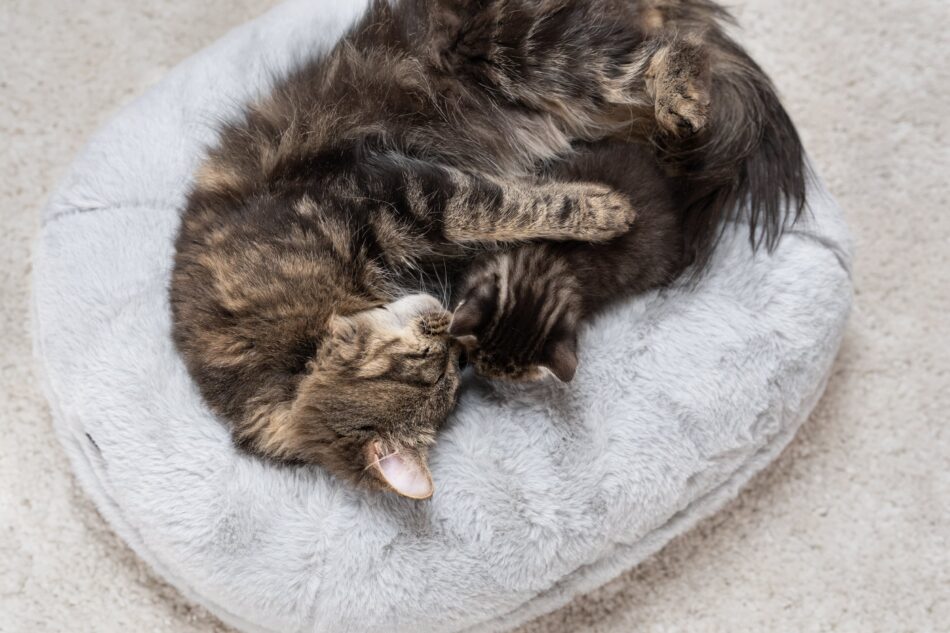
The closest ancestors of the domestic cats were solitary wildcat species that didn’t have to, and in most cases didn’t want to, draw attention to how they were feeling. Showing weakness would potentially expose you as an easier target for predators or competing cats. This is still present in cats today; in most cases they will try to hide what they are feeling from you.
With that being said, they do of course communicate. With other felines, and with us. They use scents and vocalisations, but also a lot of visual cues in the form of body language.
When you’re trying to analyse and understand your cat’s body language it’s important to use the context of the whole situation rather than just looking at one thing. Check the surroundings and try to work out what factors might affect your cat. Is there anything that might make the cat stressed, angry or worried? This might make it easier to understand the cat’s, not always crystal clear, signals.
There are five things to focus on when trying to read your cat’s body language. Eyes, ears, face, body and tail!
EYES
Slow blinking – Eyes that blink slowly or are half closed indicate that your cat is really relaxed and trusts that the situation is not threatening. Try blinking back in the same slow way to mimic the cat’s behaviour. This is a great bonding exercise for the two of you.
Dilated pupils – Given it’s not extremely dark in the room, large pupils indicate that your cat is feeling surprised, or scared and anxious. Normally the eyes will also be open wide, and the cat will not blink.
Constricted pupils – If the pupils on the other hand are very small and constricted, your cat will most likely feel tense, possibly bordering on aggressive.
Staring – If your pet locks their eyes on something or something, it is likely to be a challenge. If it’s you the cat is staring at – best not to approach!
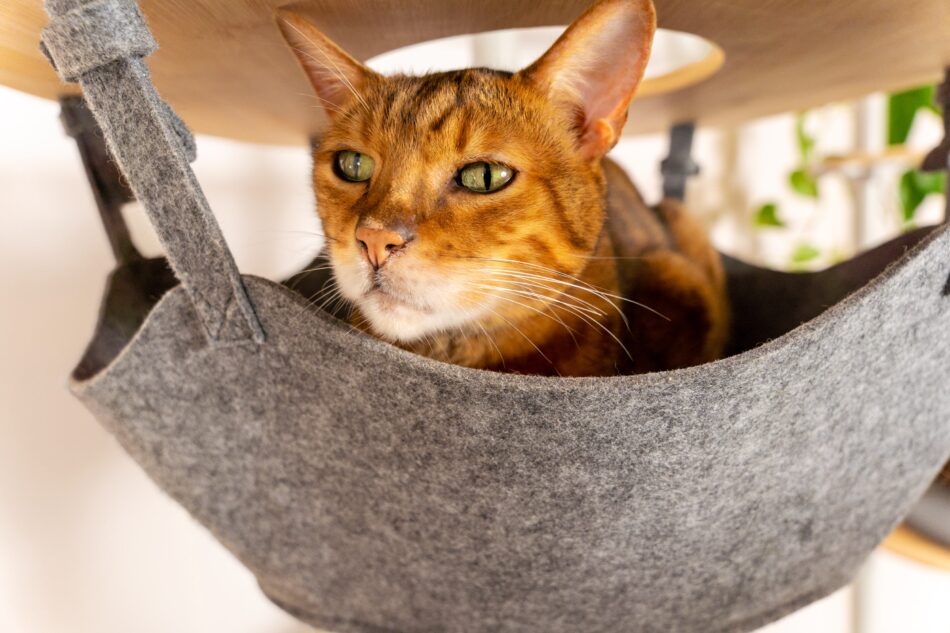
EARS
Pointing slightly up and forward – A content and relaxed cat will keep its ears held upright and pointing forward. This is the default ear position, and the ears will probably move somewhat as the cat follows familiar sounds in the room.
Pointing straight up – This is a sign of a cat who is alert and ready to go. They might have heard something they want to investigate, but will first listen out a bit longer.
Pointing in different directions – If one ear is angled to the side and the other one points backwards it is possible that the cat is nervous and trying to assess the situation to get as much information as possible.
Pointing back, lying flat against the head – This is a sign of an annoyed, angry and potentially aggressive cat who is ready to pounce. It’s best to leave them alone.
FACE
- A relaxed and happy cat will have relaxed whiskers pointing going out from the face. Many cats also have a relaxed facial expression that resembles a smile.
- An anxious or scared cat will pull its whiskers back along the side of the face to take up as little space as possible and not seem like a threat. Or if they are on high alert, the whiskers will point forwards.
- If the whiskers stand erect pointing away from the face, or forwards, it’s a sign that the cat is angry. He or she might show their teeth and hiss or growl.
BODY
- The neutral body stance for a cat is relaxed and even, with no tension. If they are lying down, they will be stretched out or curled up into a ball with their paws tucked in under the body. Often this might be followed by purring, a sign that the cat is content and relaxed.
- An anxious or scared cat will in most cases just run away and hide somewhere away from what is frightening them, but if it’s not possible they will crouch very still on the ground with their head held low.
- An angry cat will try to make itself look as big as possible, with the fur pointing away from the body, straightened front legs and an arched back.
- It’s worth noting that a cat that’s lying on its back might not want a belly rub. Just as dogs they are trying to show submission, but would in most cases prefer just to be left alone.
TAIL
Tails tell tales! As well as helping cats to balance, your feline friend’s tail tells a lot about how they’re feeling, making it an incredibly valuable tool for communication. Since it’s connected to a cat’s spine, the tail is a part of their nervous system, which also makes it very sensitive. Here’s exactly what your cat’s tail is trying to say.
Held upright – This is a sign of a happy cat that wants attention and company. The tail can also be relaxed, but normally doesn’t move.
Held straight down – This should be a sign that the cat is scared or upset. A scared cat can also hold its tail under its body.
Wagging – When dogs wag their tails they’re happy, but when cats wag their tails they’re mad – right? Not always. There’s more to a cat’s fluffy tail than you might think. Of course, cat’s thrashing their tail hard and fast across the ground is a sign of stress, but what about when they’re twitching it from side to side and intently focusing on something in the grass? They’re most likely concentrating on a fly, ready to pounce and catch their prey. If the tail is moving quickly from side to side, the cat is likely annoyed and would like to be left alone. If the cat instead wags the tail slowly, they are trying to assess the situation and deciding what to do. The cat might be a bit worried, so if you can, try to reassure him or her.
Big, bushy tail held out straight from the body – Do not approach! This is an angry cat that is trying to look as scary as possible to potential threats.
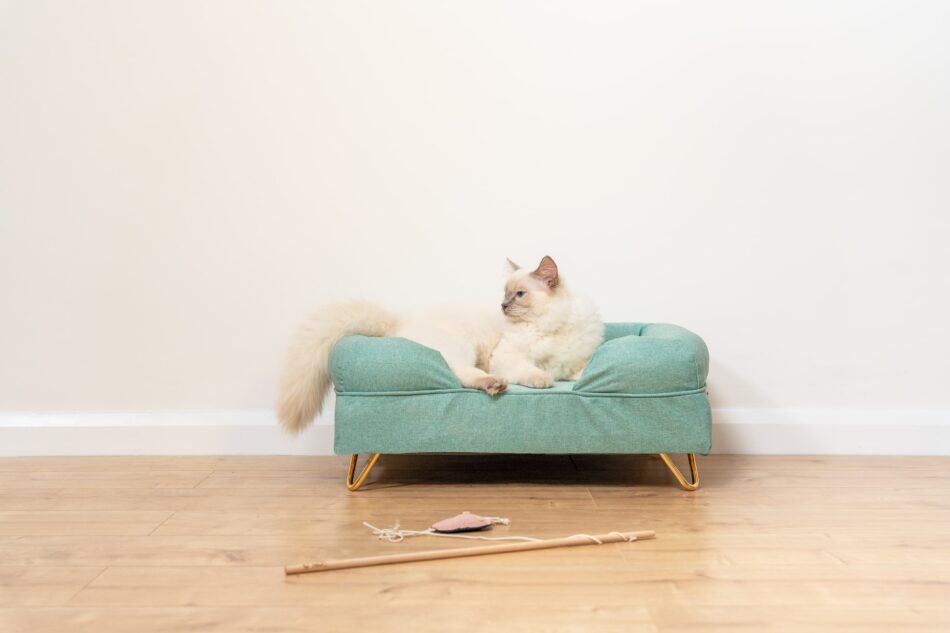
This entry was posted in Cats
We’ve all been asked the age-old question at some point in our lives… “Are you a cat person, or a dog person?”
For those who reply “cat person” you will likely have had the confusing but unsurprising reply of “No way! I HATE cats!”
But why? So many people have strong feelings against cats, and most of the time can’t even justify their negativity. While some reasons can be understandable, others are just plain unreasonable! Here are a few reasons why our feline friends gained so many haters…
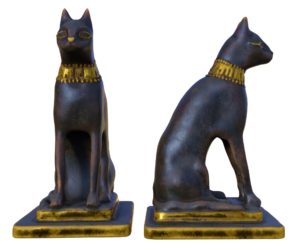 Myths and history
Myths and history
If we look back into Ancient Egyptian history, we will see that cats were considered magical beings, protectors and a sign of good luck by the Egyptians, and they even worshipped a Cat Goddess, named Bastet.
So how have we become a world completely split over whether cats are good or bad?
Throughout history, other countries have had mixed thoughts on the symbolism of cats. The main myth that has been carried through to the present day is most damaging to the reputation of the black cat. Some say if a black cat crosses your path you will have bad luck, others believe black cats are actually witches in disguise. Despite neither of these conspiracies holding any weight in truth, they still impact black cat adoption rates to this day, and may go somehow in explaining why so many people feel uneasy around cats of any colour.
Bad experiences
A common reason for the hate towards cats is related back to bad experiences that may have happened as early as childhood. It normally follows a story of visiting a family or friends house as a kid, and being swiped, bit, scratched or hissed at by the resident cat, with rarely any mention of what the disrespectful child-self may have done to provoke said cat.
Some people fear dogs for the same reason too so it definitely isn’t the main cause of hostility. We can only hope that someday these people may come around to the fact that it is very rare for a cat to attack for no reason, as an adult you are going to be better at reading the signals of a cat who would like some space.
Independent creatures
Yes, okay, sometimes cats aren’t as affectionate as dogs but this is because they are typically more independent. However, the notion suggested by some cat-haters that cats aren’t capable of loving their owners at all, is just plain silly.
Some cats who have bad experiences with humans, may be more wary or even fearful of us, and will likely have got used to their own company and learnt to fend for themselves. But even the most frightened and isolated cats learn to enjoy human company again, after lots of love, care and affection.
There are lots of fascinating ways that cats show they love their owners and you can read all about those here.
Neighbour’s cat
If your neighbour’s cat is causing a mess in your garden or terrorising your chickens, it is understandable that some anger may develop towards the whole species. However, that behaviour is not a reflection on all cats, so don’t paint them all with the same brush!
You might, however, like to place the responsibility on the cats’ owners and suggest solutions to prevent upsetting neighbours, such as an outdoor pet enclosure for cats to spend time outdoors without getting up to mischief. Some people even walk their cats on a lead when they are new to an area to show them where they can go – whether this works or not is debatable.
“Dogs are cuter”
Some people are just die hard dog fans and we have to accept that, but the argument of which pet is “cuter” is entirely subjective and shouldn’t be taken as truth. If you think cats are cuter, then good for you! Cats should have as much chance as any other pet in finding a happy and loving home for life, and if you give them everything they need to be safe and content, they will love you right back.
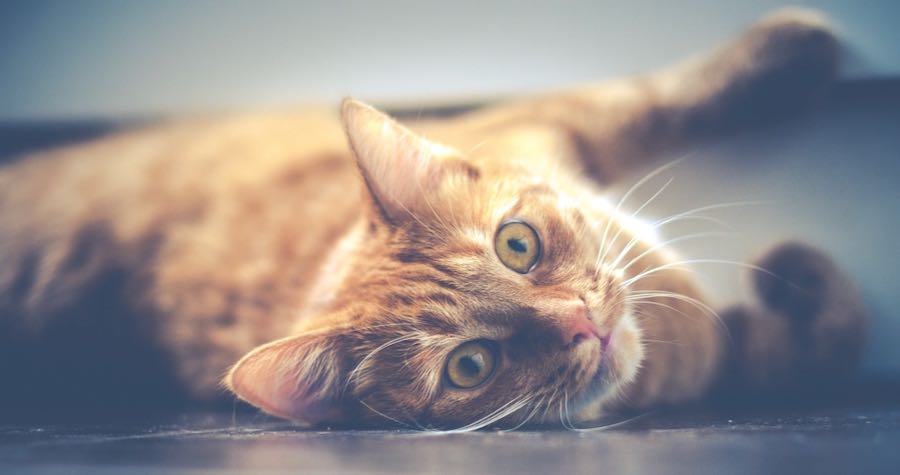
This entry was posted in Cats

Scratching is to cats as tail-wagging is to dogs – it’s a completely intrinsic behavior that is healthy for them to engage in. But how does scratching help cats? In many ways, actually! The act of scratching for cats is an emotional release to get rid of any stress or excitement, but it’s also a necessary act that allows them to keep their claws maintained and give their body a good stretch. And that’s precisely why cats need scratching posts so they can have a safe place to participate in this normal feline activity.
4 reasons your cat needs to scratch
The act of scratching for cats isn’t second nature – it’s in fact, first nature. A primal instinct that is part of their innate feline behavior, cats scratch for a variety of reasons to help both their bodies and their minds.
- Maintain their claws: In the wild, cats use logs or trees to scratch so they can sharpen their claws and clean away any dirt or debris trapped in their paws. Akin to a manicure, cats can actually trim their nails and keep them manageable with one scratching post-session.
- Stretching: What’s better than a full-body stretch first thing in the morning? If you ask your cat, the answer is nothing. When cats scratch on a cat scratching post they’re able to stretch out their body, legs, and paws to give themselves the necessary movement in their muscles to keep them healthy and strong.
- Emotional release: There’s no doubt cats enjoy the act of scratching for physical reasons, but engaging in this natural activity is actually super beneficial to their mental well-being as well. When cats scratch, they’re able to release any pent-up stress or excitement to calm themselves emotionally in a way that best serves their state of mind.
- Scent marking: Did you know that cats use scratching as a communication tool? With tiny scent glands located all over their paws, cats use scratching as a way to ‘mark their territory’ and tell other animals that this is their domain.
5 benefits of scratching posts for felines
Cat scratching posts are more than just a feline fitness center where your furry friend can exercise their physical, mental, and emotional needs. With their sturdy platform and alluring nature, cat scratching posts are the saving grace for your furniture so they can stay claw and paw free. Let’s take a closer look at all the benefits of cat scratching posts:
- Prevents furniture scratching: Your cat needs to scratch. So having a durable and sturdy scratching post allows your feline friend the ability to perform their innate behavior while keeping your furniture claw free.
- Release stress: How do you destress after a hard day at work? While cats make living look easy, our feline friends are still susceptible to feelings of stress as well. And with a scratching post, your cat can release any feelings of excitement or worry that has built up in a healthy and engaging way.
- Claw care: As a cat parent, you know all too well that trying to give your cat a manicure is out of the question. So how do you keep your kitty’s claws clean and cut down? With a cat scratching post, of course.
- Encourages exercise: Keeping your cat active is essential to their overall health. And since most cats won’t agree to a walk around the block on a leash, the act of scratching provides the necessary exercise they need. Especially for cats who don’t have the opportunity to go outside, a sturdy cat scratching post allows your feline friend the ability to stretch and move in a way they love.
- Promotes feline interaction: If your home is a multi-cat household then the benefits of scratching posts are far-reaching. While you can certainly get one scratching post for each cat, having just one for them to share encourages positive interactions and is a great way for them to get along.
Should kittens have their own scratching post?
As the toddlers of the cat world, kittens have lots of energy! And in order to ensure they get a good night’s cat nap, it’s essential to find a way to encourage ways for them to expel that energy. A scratching post is an excellent way for your kitten to get their ‘wiggles’ out before bed and also learn healthy ways to express their natural instincts. Giving them a dedicated space all their own not only prevents unwanted scratches on your furniture, but also helps to create positive behavior as they grow into adulthood.
Introducing Omlet’s sustainable cat scratching posts
At Omlet, we understand cats and their innate, primal instincts. It’s what allows us to think outside the box and create products that bring you and your pet closer together. So when we set out to design a new cat scratching post, we challenged our designers to create a product that your feline friend would not only love, but would stand the test of claws while also looking good in your home.
Introducing the Stak Cat scratching post, designed by Omlet. A sleek and sturdy post crafted completely from sustainable materials to allow your cat endless scratching sessions. The Stak challenges the cat care norm of consumable scratchers with its refillable, stackable cardboard triangles so your cat never runs out of something to scratch, and you don’t have to worry about ever buying another scratching post. This is literally the last cat scratching post you’ll ever buy. Because kittens and cats scratch every day, we curated this post to be the one they would use daily – for life. When the cardboard gets worn down, simply remove them and recycle and replace with new Stak triangles.
Preventing your furry friends from scratching the furniture
While the cat scratching post is away, the feline will find something else to scratch. So if you find your furry friend exercising their claws on your walls, carpet, or couch, it’s time to redirect this destructive behavior to something more beneficial. Here are our top tips on breaking your cat’s habit of scratching on the furniture:
- First and foremost, introduce your cat to a cat scratching post. In order to encourage your feline to use the post instead of your leather chair or wool rug, sprinkle some catnip on the scratching post. The irresistible scent of the catnip will make the scratching post your furry friend’s new favorite place to scratch.
- Cats are particular – especially when it comes to scratching surfaces. So if the couch and armchair are their favorite places to sharpen their claws, cover them with materials that will leave your cat displeased and looking for something else. Tin foil, double-sided tape, or Saran Wrap are all surfaces that will deter destructive clawing and make them move to a better surface such as a scratching post.
- One of the best parts of cat parenting is the post-workday snuggles on the couch with your favorite furry friend. But what if the cat couch surfing leads to cat couch clawing? Simply cover their spot with a cozy cat blanket to encourage snuggling instead of scratching.
- If you start to hear your cat scratching the walls of their litter box, it may be their way of telling you they want more privacy. And you can’t blame them! So give your cat what they want with an enclosed cat litter box and perhaps even a private cat house so they can destress with ease wherever they are.
- It’s known throughout the animal world that certain smells are off-limits to certain species. And cats are no exception. So if you have a repeat furniture-scratching offender in the house, try spraying citrus or menthol scents on the areas you want them to stay away from. These odors are sure to deter the most persistent of scratchers.
Training your feline to use their new scratching post
The most important thing to remember when buying a cat scratching post is the specific needs and scratch styles of your cat. Do you have a pint-sized puss or a tall and long feline? Does your cat like to scratch on their hind legs or while lying down? Making sure you provide your cat with a scratching post that is appealing to their size and needs will better ensure their use of the post over anything else.
Finding a cat scratching post that is sturdy and wide is another important feature to consider. A strong, heavy base will help prevent the scratching post from falling over during a scratch session and allow even the tallest of cats to reach full stretch potential. Next, make sure the cat scratching post is covered in material with vertical grooves rather than horizontal to allow for the ultimate scratching experience. Cardboard is an excellent choice with its corrugated fibers that help eliminate the chance of snagged claws when scratching.
Once you have the perfect cat scratching post picked out all that is left is introducing your feline friend to their new friend. Be sure to place the scratching post in an area frequented by your cat so they can get accustomed to the new equipment quickly. And any time they mistake your furniture as a still acceptable scratching option, simply redirect the behavior by placing the scratching post in front of them. Cats are curious but also very clever so they will catch on in no time.
How time outdoors impacts your cat’s need to scratch
Domestic cats can be found living indoors, outdoors, or a combination of both in homes all across the country. And while every cat needs an outlet to express their natural scratching instincts, outdoor cats don’t need as many scratching accessories inside the home as they are able to exercise those needs very well outside. Just like their wild ancestors, outdoor cats use trees or other natural surfaces to manicure their claws, release any tension, and get a good ol’ fashion exercise.
So if your cat stays indoors more than out, consider creating a safe outside environment where they can not only play, but help discourage indoor scratching. If you have a spacious backyard, you can add an outdoor Catio enclosure where your feline friend can explore nature in a secure structure. Live in an apartment or condo with no backyard? No problem! Create a cat-proof balcony with a balcony cat enclosure. Your feline friend will love the fresh air and natural environment to exercise their instincts and you will love keeping your furniture and walls scratch-free.
Identifying stress in your feline
When cats are stressed, they have a tendency to release their emotions through their claws. And that’s when your furniture could be in real danger! So in order to avoid cat-scratch-fever on your belongings, pay close attention to what is causing the stress in your cat so you can help eliminate it from happening in the first place.
There are a variety of reasons why cats exhibit a stress response – it could be another cat, another pet (usually the dog), or even a child in the home who has done something to freak out your poor puss. In other instances, it may just be the hum of the dishwasher or even a jet plane flying by that could trigger their emotions.
Paying close attention to your cat’s behaviors before they start scratching can give you better clues to the cause and help you to minimize or remove the source altogether. And adding a second cat scratching post will encourage their instinctual behavior to be released in a healthy and less destructive manner.
Breeds least likely to scratch
If you’re just starting out on your cat parenting journey and scratching is a big concern, fear not. There are some cat breeds that are less likely to scratch when given a good cat scratching post as an outlet. Here are our top cat breeds that are more likely to snuggle on your furniture than scratch it:
In general, cat breeds that are more likely to scratch with frequency are also the cats with high-energy personalities. While this can certainly differ from cat to cat, breeds such as Bengals and Siberians tend to have a greater need to scratch more often.
Cat care with Omlet
At Omlet, our goal is simple – make products that help care for your pet in the best way possible. From cat scratching posts, to comfy cat beds, to outdoor cat trees or cat litter, we have everything you need to make life with your cat better. And when you give your cat everything they need, you can both focus on doing more of what you both love – spending quality time together.
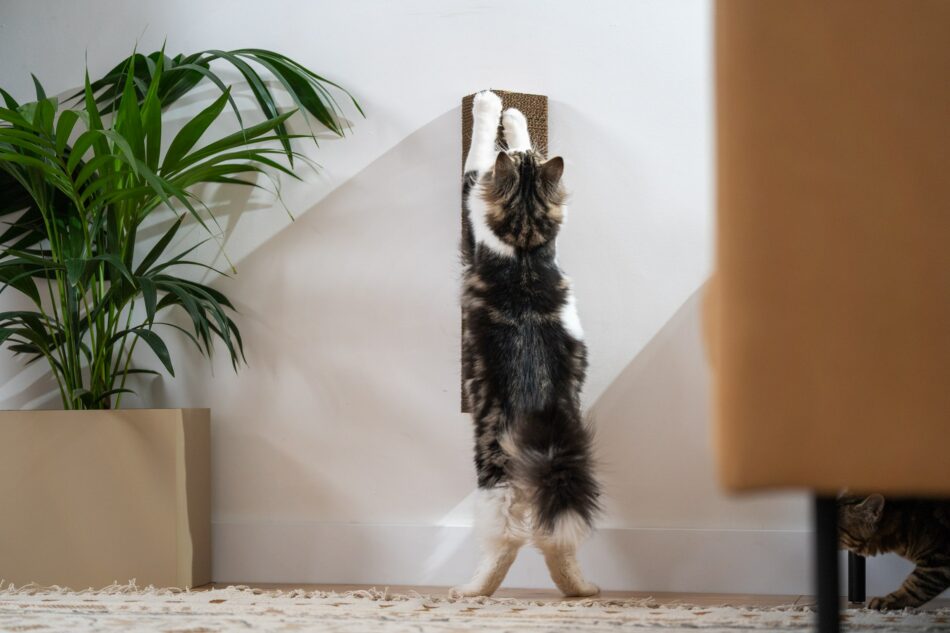

This entry was posted in Cats
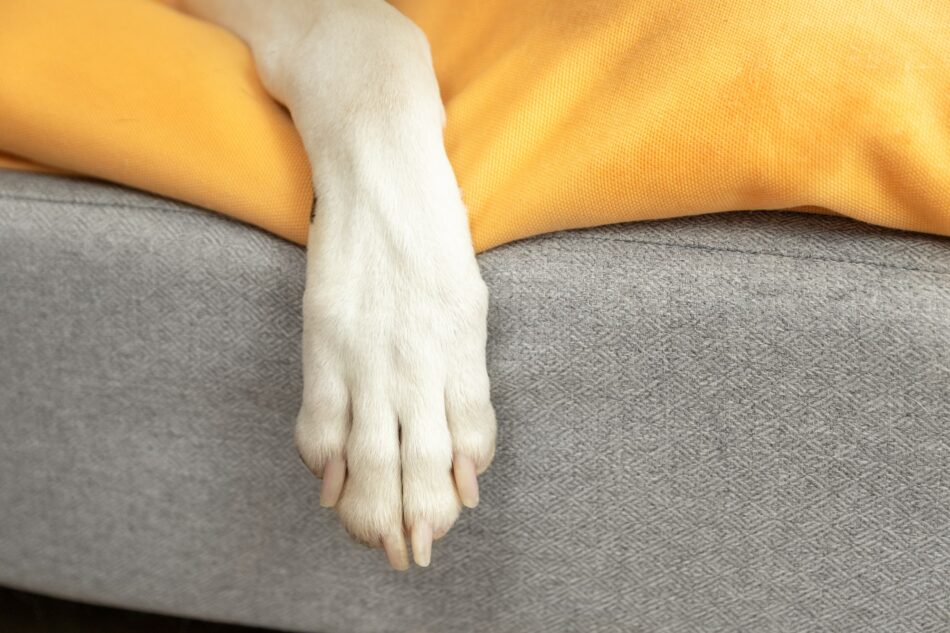
In the intricate tapestry of the animal kingdom, the paw stands as a remarkable adaptation and a testament to evolution’s creativity. From the stealthy cat’s paw to the unique polydactyl paws of the guinea pig, these appendages are diverse, functional, and revealing. But why do some animals have paws? In this guide, we journey through the history of the paw and unveil the fascinating insights that paws offer about the wonderful animals that bear them.
History of the paw
The story of the paw unfolds across millennia, tracing back to the evolutionary emergence of the first creatures to venture onto land from water. Limbs evolved into diverse forms to navigate various terrains, leading to the development of paws. These adaptive structures equipped animals with the ability to walk, climb, dig, swim, and manipulate objects, serving as the cornerstone for survival.
Before our pets were domesticated, they had to defend themselves to stay alive while hunting for their own food. While domestication has quieted many of those innate traits, still several haven’t changed, staying with the species throughout evolution. This includes the paw.
Dogs and cats are the main paw-ed animals that may come to mind. But before we had house cats and dogs, there were generations of wild cats and wolves roaming the Earth. In the wild, the main purpose of the paw was largely related to sound and shock absorption. The fatty tissue inside the pads helps animals jump and land without pain or noise which was especially helpful for silently hunting prey in the wild while also protecting limbs from impact.
The evolution of the paw is as fascinating as the evolution of mankind – every change significant for its new environment and needs. So if your best friend has four paws, it’s best to know them like the back of your hand.
What can the paw tell us?
Animal paws hold a great deal of information in letting us know and understand how our furry friends are feeling. For instance, did you know cats knead blankets and pillows when they’re feeling safe and content? And for some animals, they use their paws as a way to release sweat and cool down. Here’s a breakdown of some of the many details that we can learn from the paw.
Functionality over form
Paws, despite their differences in appearance, share a common purpose: functionality. Whether it’s the padded feet of a feline or the webbed toes of an otter, each paw is intricately designed to suit the lifestyle and habitat of the animal.
Insight into locomotion
The structure of paws reveals clues about an animal’s mode of locomotion. For instance, the cat paw is designed for pouncing, jumping, and clawing through nature. This is why having a sturdy cat scratching post for your feline friend is essential to support their natural instincts. Each animal possesses unique traits in their paws which lends themselves to their survival.
Environmental adaptations
Paws serve as a mirror reflecting an animal’s environment. For example, animals dwelling in snowy landscapes often sport larger, broader paws, providing better traction and acting as natural snowshoes. In contrast, animals in arid regions, such as the desert, might have padded paws to better endure hot surfaces.
Sensory significance
Paws are not merely appendages for movement; they’re sensory hubs of communication. The paw pads of animals are rich in nerve endings which gives them a heightened sense of touch. So as pet parents, it’s super important to be mindful of temperatures for your furry friend so you can accommodate them as needed. When the summer heat rises, be sure you have a memory foam dog cooling mat or ultra comfy cat cooling mat to help their sensitive paws get some relief.
Health clues
Observing an animal’s paws can also offer insights into its health. For example, if your dog’s paws have an unusual odor or the hair is overgrown between the paw pads, this could be an indicator of an ailment requiring veterinarian treatment. Likewise, bumblefoot, a common infection that can appear on guinea pig paws, is a sign that treatment is needed as well. Allergies remain the most common problem that dogs and cats have with their paws – noted especially by excessive licking or chewing at their feet. When was the last time you looked at your furry friend’s paws?
Omlet and your pets’ paws
The enigma of the paw extends beyond its physical presence; it embodies the evolutionary journey, environmental adaptation, and behavioral nuances of the diverse animals in our world. At Omlet we understand the significance of pets’ paws and create products to serve as a reminder of the marvels crafted by evolution. From cat scratching posts with lights and dog beds with customizable toppers, our products help captivate stories hidden within the very footsteps of our favorite furry friends.
This entry was posted in Cats
One of the great things about the Omlet Outdoor Cat Run is how extremely versatile it is. The run in itself can be modified to fit the space you’ve got and the need of your cats, but it doesn’t stop there! We constantly see creative and and fun ways of using the run, and we thought we might share some that could inspire you, whether you’re getting a run for the first time, or are just looking for ways to getting the run ready for spring!
DECORATIONS
When it comes to decorating the cat run there are practically no limits. Allow your cats to do all the things like like on the run, whether it is climbing, playing, running, scratching, hiding, or just lounging in a hammock. You can make the run even more practical with run covers that allow you cat enjoy the run in all weathers, or a chair for you to sit on while you’re spending time with your furbabies. We also love all the (catfriendly) flowers and plants that customers add to the run to make it blend in to the garden even more!

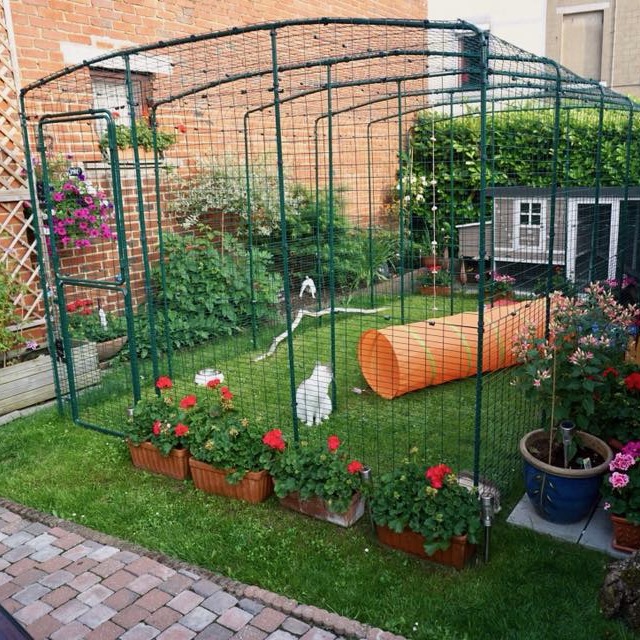


CONNECT IT TO THE HOUSE
The cat run comes with four walls, but is robust enough to be stable with only three of them. If you manage to find a way to secure the open end to the house, this is another way of allowing the cats to move between inside and outside at their own will. This amazing set up is from a customer in Denmark, with a special kitty entrance from the basement into the run in the garden, where by the looks of things both humans and felines will enjoy spending time. By combining clear and heavy duty covers they have also made sure the cats are safe from both rain and sun while out on the run.
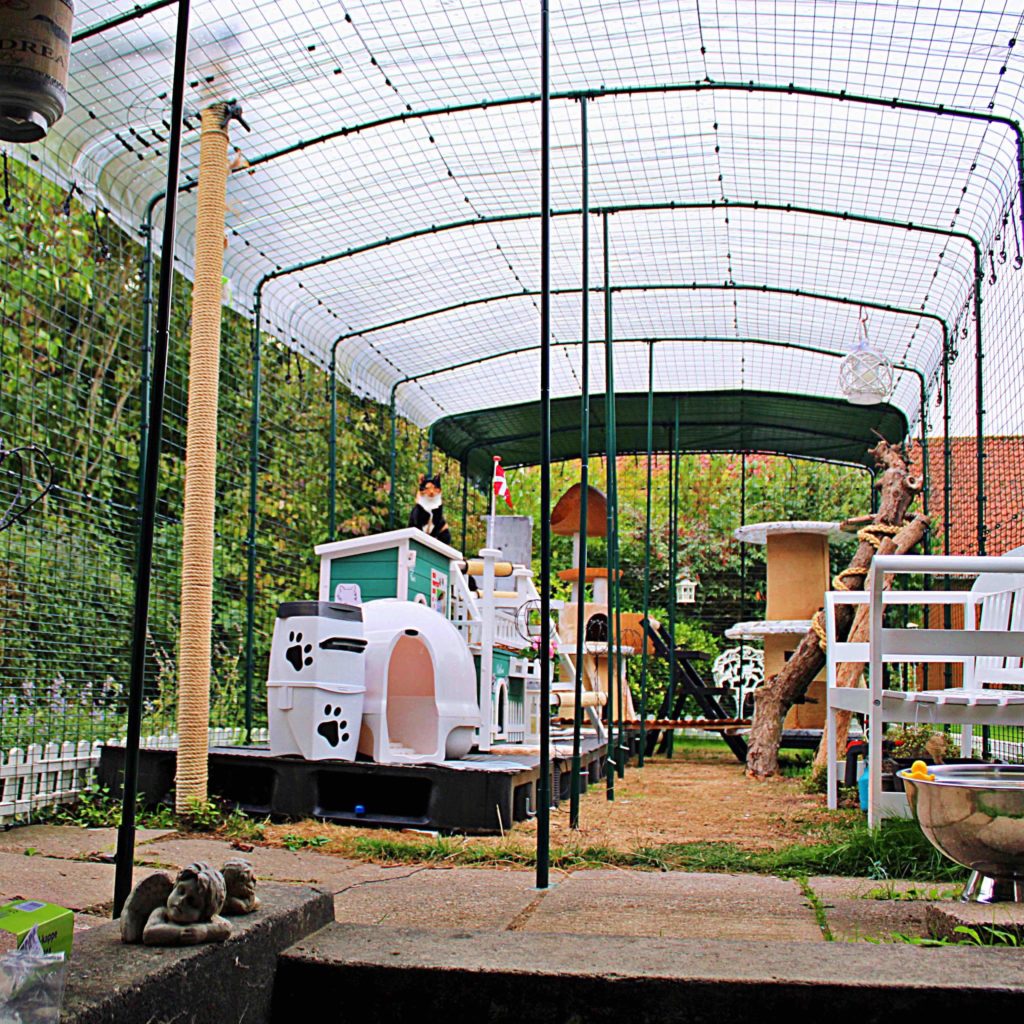
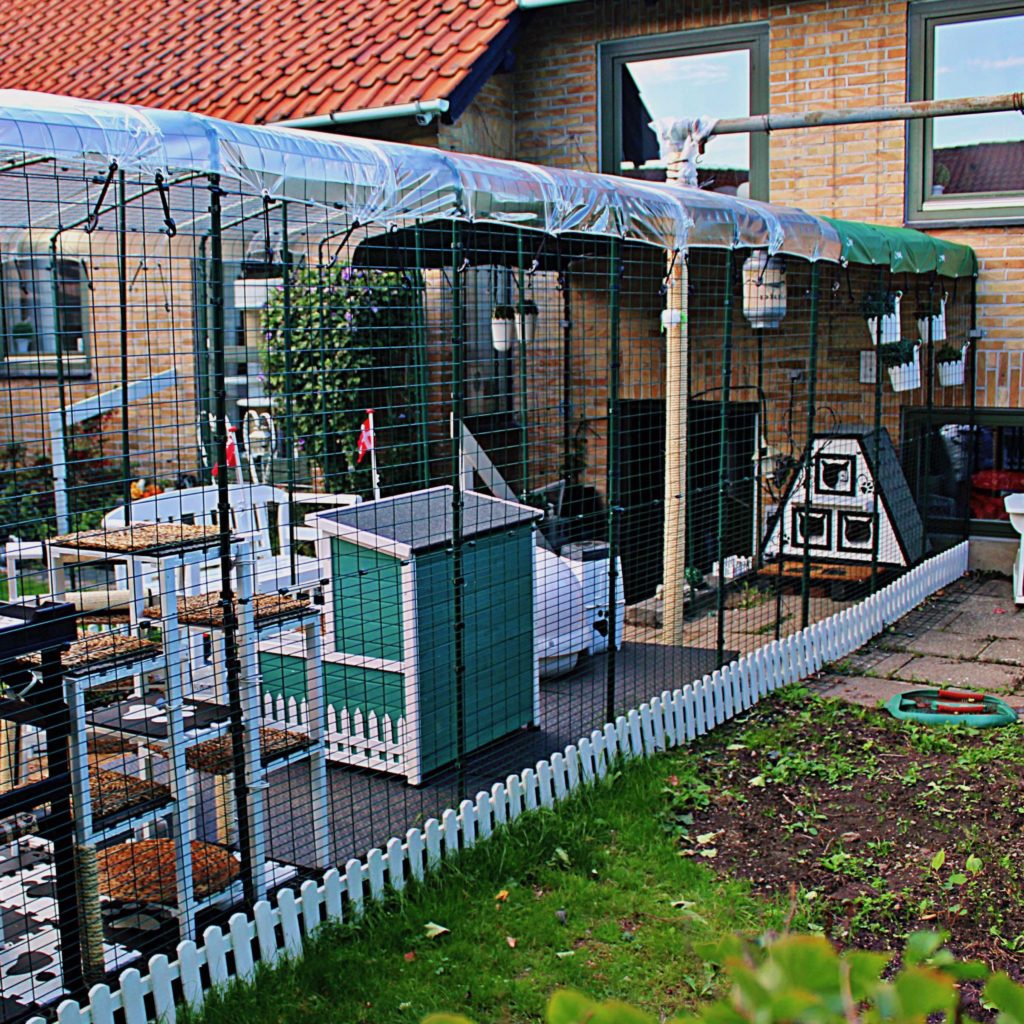
WORK WITH WHAT YOU’VE GOT
This German customer decided to build their run around a small tree in the garden. This way you get around most of the decorating of the run, as the tree will act as both a climbing post, and provide shade during sunny days. Ideal!
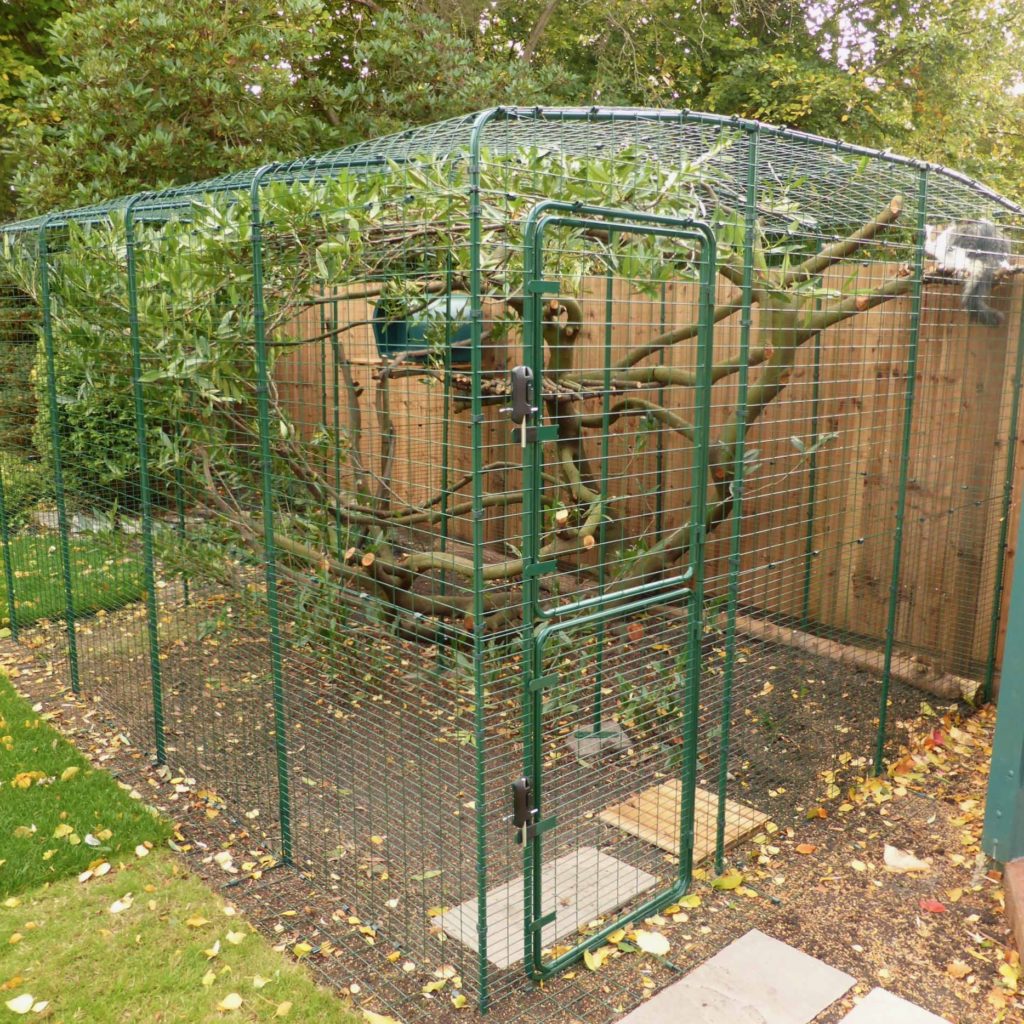
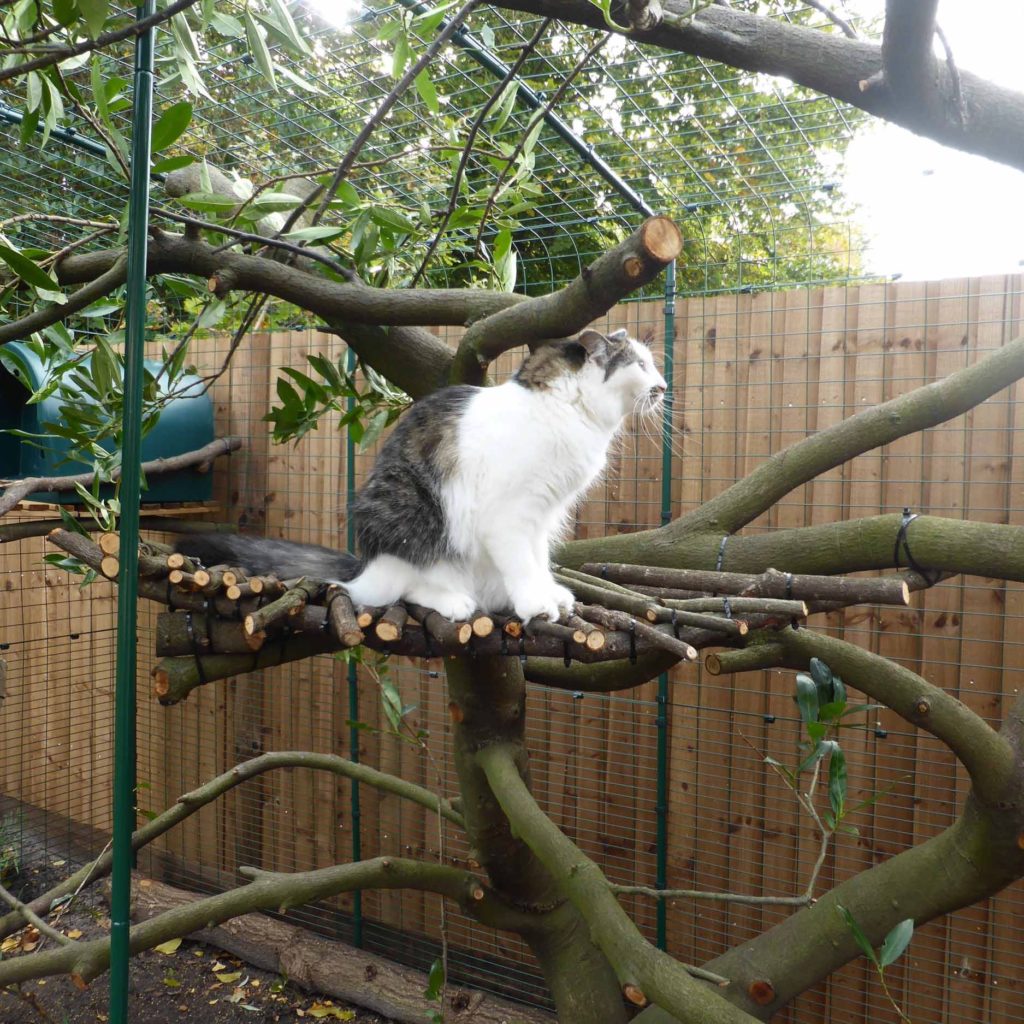

RUN ON WHEELS
The modular design of the cat run does mean that it’s possible to move it whenever needed. If you just want to shift it to a different spot in the garden you can invite some neighbours around and lift the whole run, and if you’re moving house or want to use the space for something else for a while, you can take it down and pack it up into pieces that are easy to store, ready for when it’s next needed.
However, this French customer didn’t think either of these solutions were good enough, and decided to build a platform with wheels, so that the run can be pushed around on the patio to find the perfect sun/shade ratio, or have the cat either relaxing in a corner away from the hustle and bustle, or close to the house for a more sociable time in the fresh air.
Again, a DIY specialist will be able to help you find what you need for this. Our advice would be to make sure you fasten the run on the platform, and that you choose wheels which can be locked to stop the run from rolling into the neighbours’ garden in strong winds!
CORNER SOLUTIONS
If you run out of space in one direction – turn a corner! This amazing feline haven might just be the best thing we’ve ever seen! The different resting places, the play tunnels, the toys, the decorative pebbled outline – who wouldn’t want to spend their days here?

Have you got a cat run? Send us photos of your set up, and you can feature in future posts!
This entry was posted in Cats
Cats love trees, they love things that hang and dangle, and they love shiny objects. With this said it’s not difficult to understand how your beautifully decorated Christmas Tree will seem like a wonderful playground to your furry friend. But a toppled tree will not only make a lot of mess, but it can also hurt your cat, so it’s best to do everything you can to keep your curious cat away from your holiday evergreen. Here are our best tips:
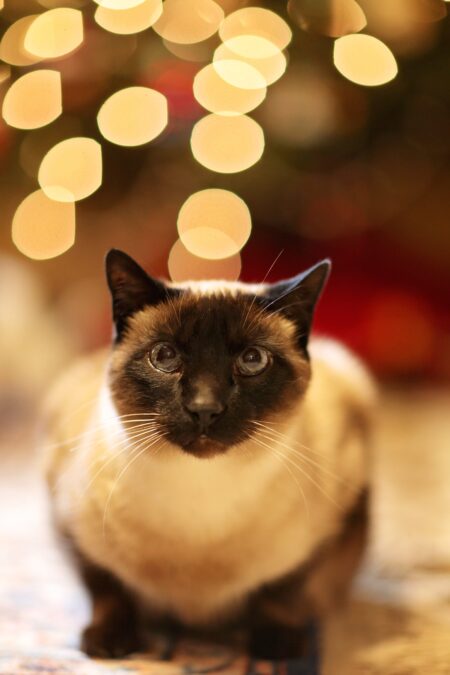
Choose the right tree and the right position
If you’re having a real tree, choose one with sharp needles, like a Scotch Pine, that the cat will want to keep their paws far away from. Hoover up the fallen pine needles every day, as they can cause serious pain if they get stuck between paw pads.
Place the tree somewhere away from bookcases, sofas and other furniture that the cats might use as a platform to pounce from.
Secure the tree
To make sure the tree doesn’t topple over and fall if the cats were to get hold of it, make sure you choose a stand with a wide base that can take some potential swinging. Depending on your set up, you might also be able to tie a piece of strong fishing line to the top of the tree and connect it to the ceiling.
Don’t tempt fate
When you’re at work, or in bed, close the door to the room with the tree to stop the cat from playing with it. Ideally you will be able to give the cat access to the rest of the house, but if you have to lock them in a room, make sure it’s big enough for them and that they have everything they need.
Go top heavy on the ornaments
Try not to place too many ornaments at the bottom of the tree where you cat can reach, especially not ones that are precious to you, or that would automatically break if they fell off. One idea is to get ornaments that make noises, like bells, and place them on the lower half of the tree. Not only will this potentially stop your cat from going further up the tree, but you will also hear when the cat has approached and can interfere before any damage is done.
You can also secure ornaments by using wire hangers, or plier ones that you can clamp around the branch. These will be more difficult for your cat to pull off.
Things cats don’t like
Cats hate the scent of oranges, so to discourage them from approaching the tree, you can put orange peels around the base. You can also wrap tin foil around the trunk of the tree. Cats don’t like the sensation of putting their paws on it or the crinkling noise it makes. This works better if you have a kitten or a younger cat, but it’s worth trying.
Secure the electrics
Some cats will nibble on the cables to the lights, which can hurt them or become potential fire hazards. Consider investing in pet-proof cord protectors, use duct tape to secure the cables to the floor or the wall, or use battery powered lights without long cables.
Skip the tinsel
Don’t use tinsel if you have a cat in the house. Tinsel is extremely attractive to cats, and they will pull it down and spread it all over the house. If ingested, it can also cause the cat serious injuries, so it’s best avoided.
This entry was posted in Cats

Is your friend or someone in your family what some might refer to as a crazy cat person? Or are you struggling to find something to give a dog, or a dog owner, for Christmas? Fur-tunately we have some paw-fect gifts for all budgets!
Everyone knows that a dog is for life, not for Christmas, but if you or someone close to you are introducing a four-legged friend to the family in the new year you will be able to give the dog the warmest of welcomes with a Fido Nook, the world’s most luxurious dog bed. The Nook will be a safe spot for your dog to return to for a nap or just some peace and quiet, and you can add the removable crate if you’re planning to crate train your puppy.
The neat freak who gets stressed about mess in the house will fully appreciate the Nook’s integrated wardrobe, which allows you to store all your dog’s things in one place. No more treats in kitchen drawers, tennis balls under sofa cushions or leads on the hallway floor! The pawfect present for both human and canine!
Are you buying for someone who’s already got a Nook for their dog? Fill the wardrobe with any of the Nook accessories: the bed, clothes rail, storage box, shelf, bowl or mirror, now all with 25% off!
You could also get them some other bits and bobs to decorate the den for Christmas, such as fairy lights or a mini wreath.

Does your mum come down to breakfast in the morning complaining about how the cat kept her up all night moving around on the bed? If you treat her to the luxury indoor cat house Maya Nook this Christmas, the cat will get a secure den of their own to sleep in, and your mum’s beauty sleep won’t be disturbed. The optional curtains are not just a beautiful decorative touch, they also provide the cat with a secluded space to fully relax in. Choose the stylish charcoal grey fabric, or use our custom made pattern and a Christmassy fabric of your choice to add a festive touch to the home.
The practical wardrobe for the Maya Nook can be used to store all things cat, like toys, food, treats and grooming products, so that clearing up for that Christmas party will be quicker than ever.
Outdoor Cat Run
Not all cats are able to roam the streets at their leisure, whether it’s because of old age, illness or some particularly nasty neighbours. Does your cat loving friend however still want their cat to breathe fresh air, hear bird song and feel the breeze in their fur? Then Omlet’s Outdoor Cat Run might be the best gift they have ever received. This run provides a fully secure and escape proof space for the cat to enjoy, fits all types of gardens or patios, and is big enough for your friend to spend time together with their cat outside in the sunshine.
Buy the cat run, now with 10% off in our Star Buys!

This entry was posted in Cats

TURKEY
Let’s start with the most important thing – the turkey. The smell of the bird is going to be irresistible to pets, and they will try anything to get their paws on some meat. Never give your pet raw turkey, due to the high risk of salmonella from raw poultry. If you want to give your pet something, limit the treat to small amounts of cooked meat, but it’s best avoided completely.
The carcass will be almost as tempting, especially when it comes to dogs, but the bones could cause serious injuries to their digestive system. Never leave the carcass out on the kitchen counter or in a trash bag on the floor where your determined dog or cat can get to it. To minimise the risk of illness and injuries, it’s best to dispose of the carcass in a secure trash bag and take it out as soon as you’ve finished with it. Remember to add any wrapping or string that the bird came with or that you have used while cooking it. Don’t underestimate how nice that smell is to your pets, and how hard they will try to get to it!
OTHER HUMAN FOOD
Too much people food can cause stomach problems, and in bad cases inflammation of the pancreas. Our festive food is often too fatty, too salty and too sugary for pets (not to mention poisonous in some cases), and they are better off not having any of it.
If you want to spoil your pet for Thanksgiving, why not give them a new toy or a nutritious treat that has been especially designed for their species?
TRAVELS
If you’re crossing state lines or international borders, your pet will need an updated health certificate from your vet. Read up on the requirements for the states you will be visiting or passing through, and make sure your pet is good to go. Ideally this should be done a few weeks in advance so you have time to get an appointment with your vet.
While traveling, take regular breaks and make sure that you’re pet is safe and comfortable while you’re on the move. Depending on how long you’re going to be away for and what pet you have, it might be more convenient for both you and your pet to leave them behind and ask a neighbor or a friend to check in on them while you’re away.

UPDATED TAGS AND MICROCHIPS
Whether you’re travelling somewhere your pet hasn’t been before or you have guests going in and out of your home over the holidays, the risk of them getting lost or running away is much greater than normal. Make sure your pet is chipped and that the information is up to date.
SAFE SPACE
While some absolutely love it, a lot of pets can get nervous when lots of new, unfamiliar people visit. If your pet is on the nervous side you might want to make sure they have somewhere set aside for them where they can go if they’re feeling stressed or need a break from all the hustle and bustle.
A crate is a perfect place of safety for a dog, but a cat will also love a cosy den to curl up in. Give them their favourite toy and some water, and let them relax in their pet haven for a while.
RULES
If you have people coming over, make sure they are aware of the rules concerning the pets. Show them which doors and windows need to be shut, tell them when they should leave your pet alone and when it’s okay to approach, and let them know that they should not feed the pets leftovers.
Lots of plants and flowers that we use for decorations around Thanksgiving can be harmful to pets. Cats are often more at risk as they can reach most decorations, and are more likely to try to nibble a centrepiece, or that bouquet you put on the side table, but dogs and smaller animals like rabbits and hamsters can also suffer.
Try to choose flowers that are not poisonous, or that don’t cause gastrointestinal upset. When it comes to decorations such as pine cones, cornucopias, candles and flameless lights, be sure to keep them out of pets’ reach as much as possible. Never leave your pets unsupervised in a room with candles or an open fire.
This entry was posted in Cats










 Cat thefts
Cat thefts












 How to bring the outdoors indoors
How to bring the outdoors indoors


 Myths and history
Myths and history

















